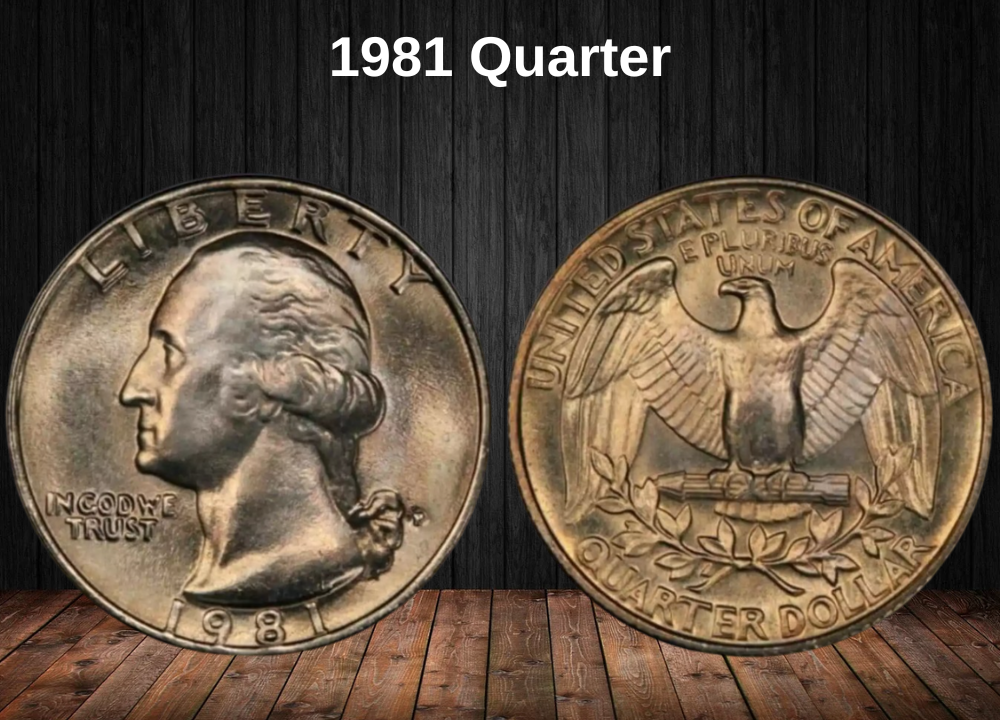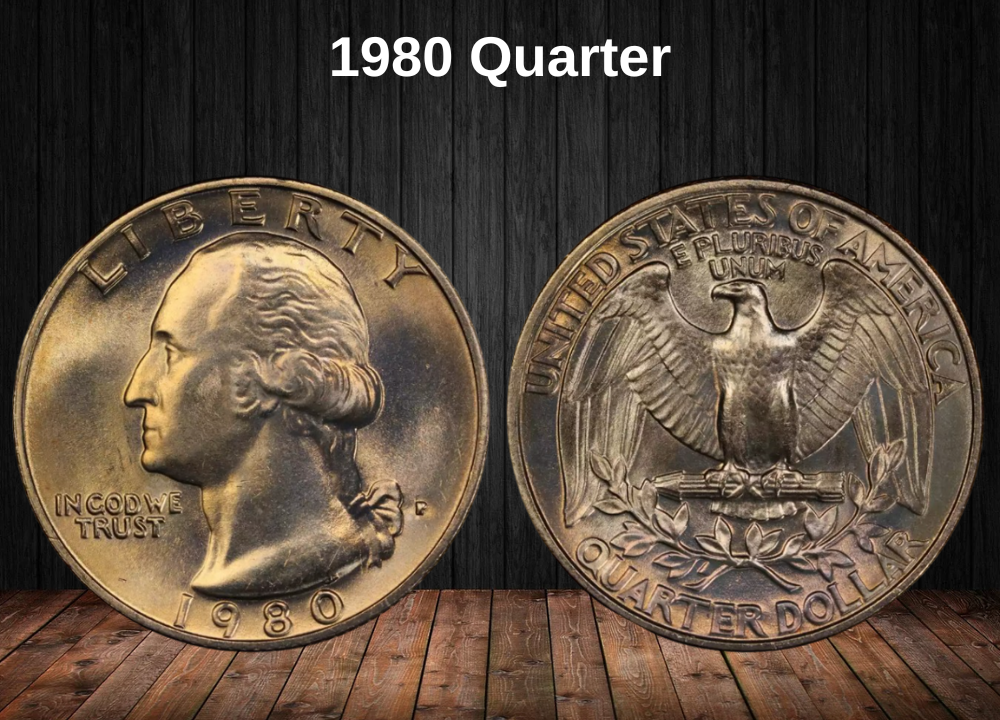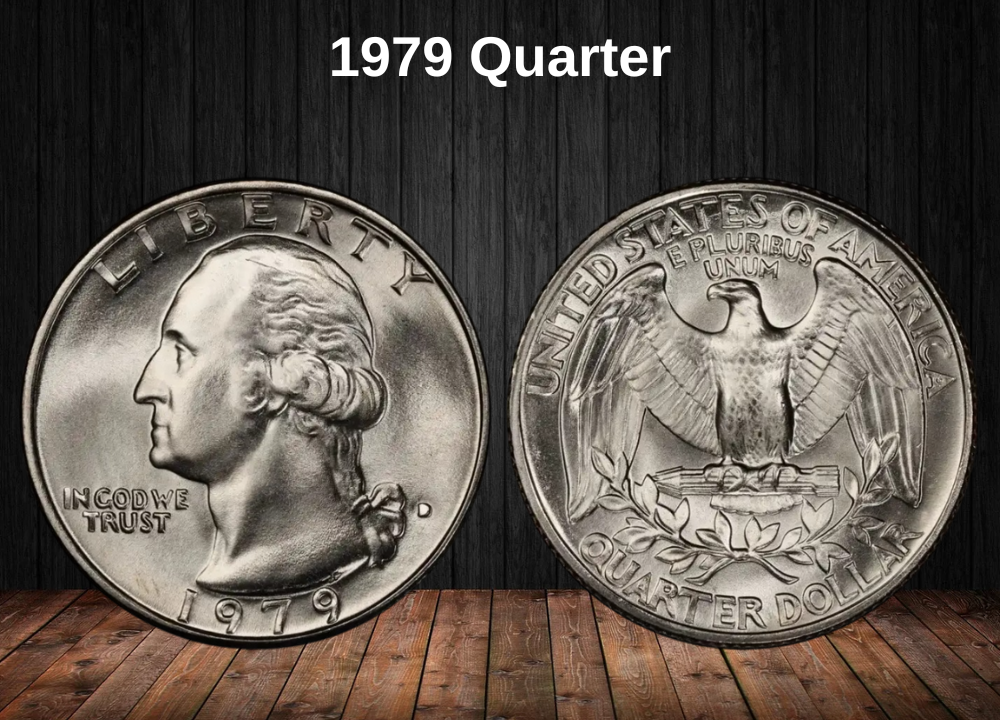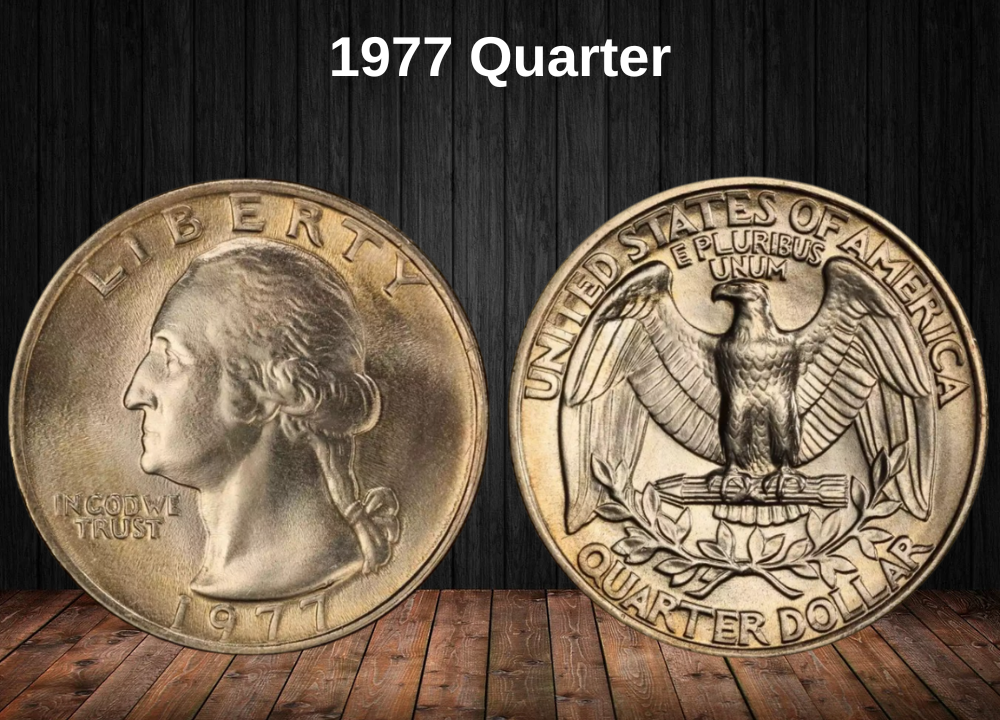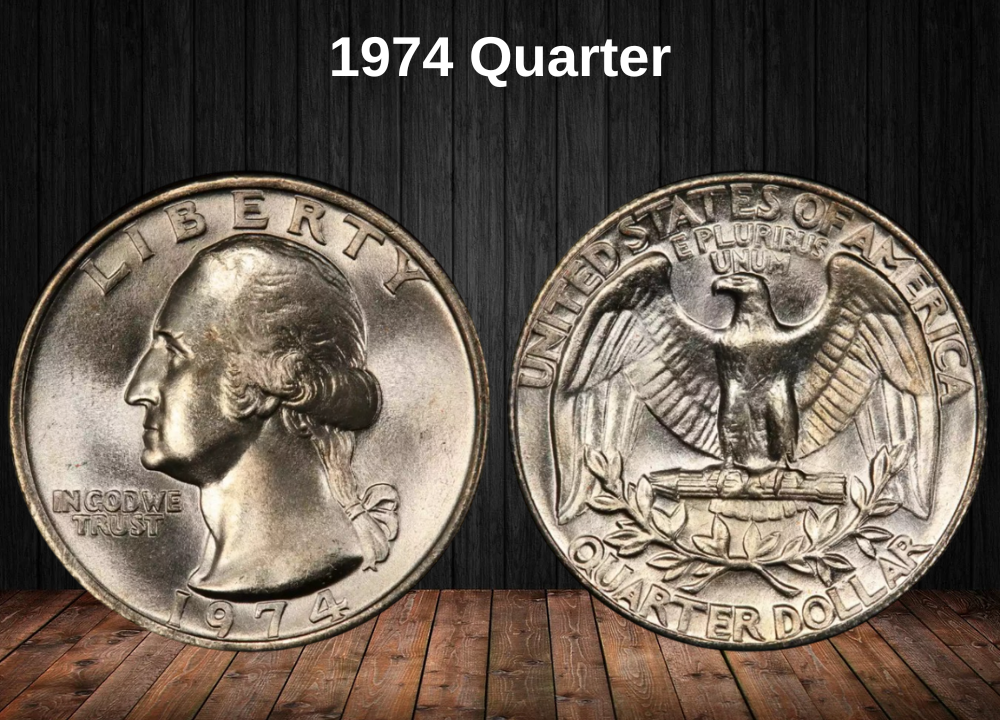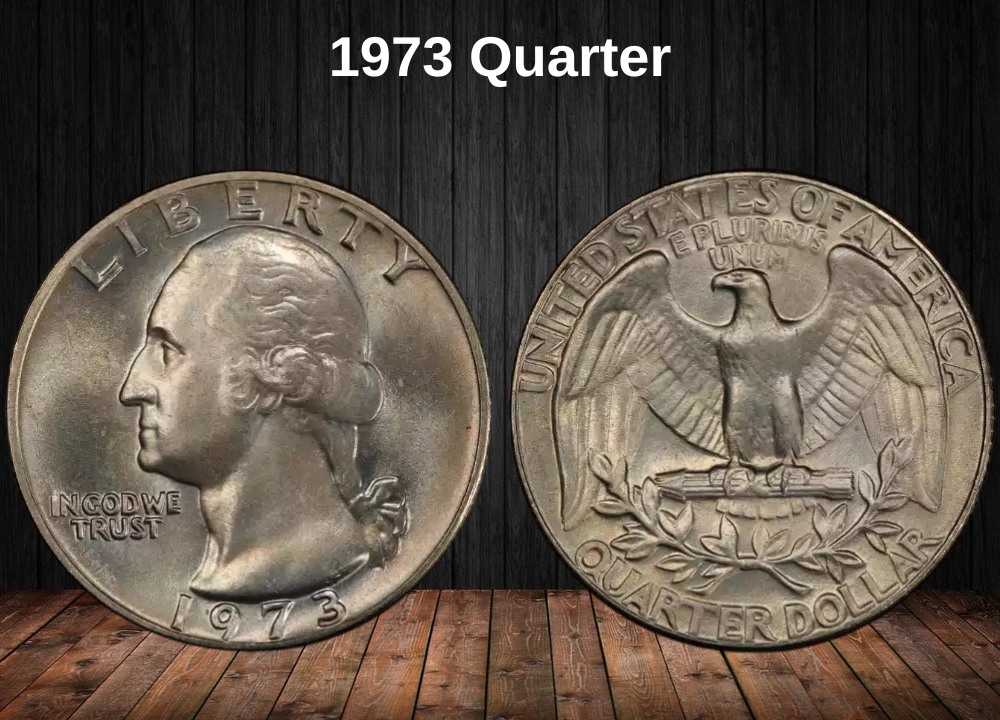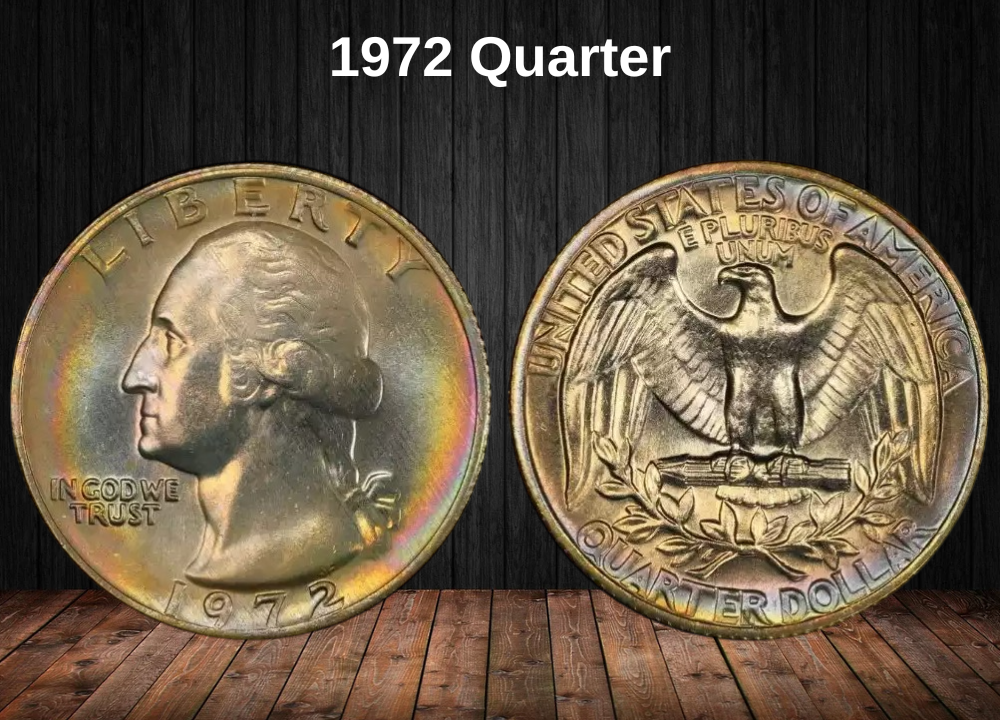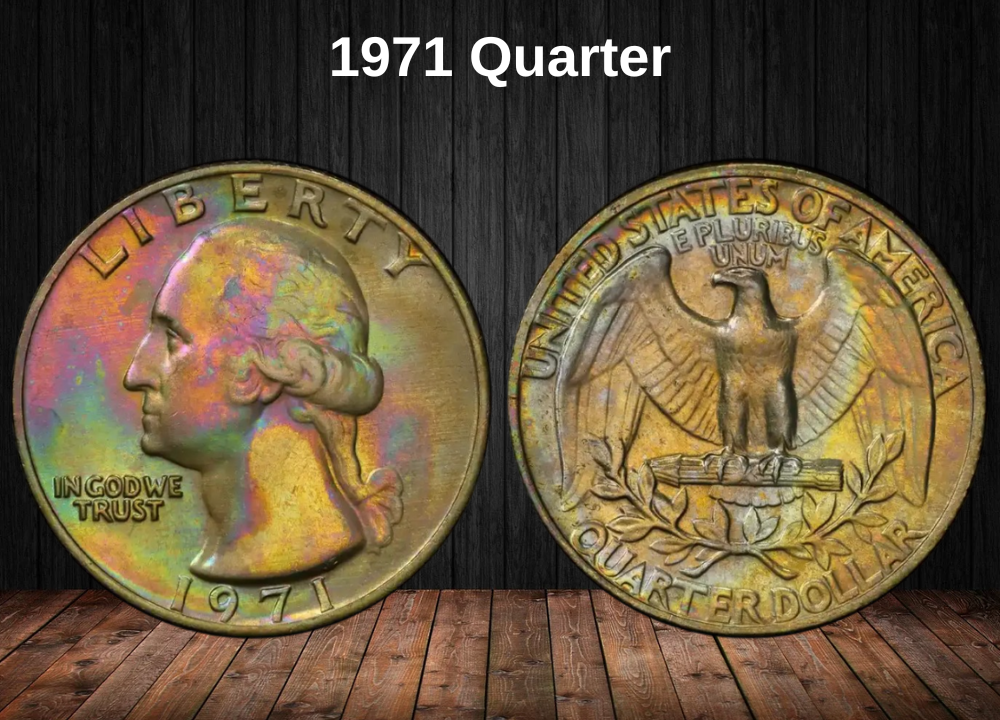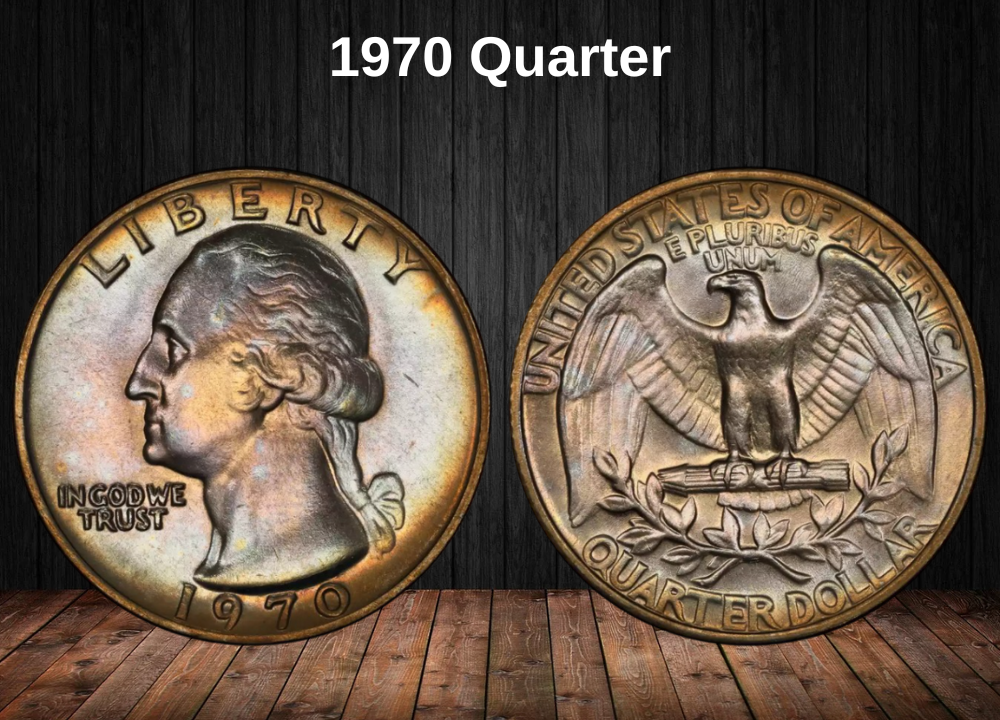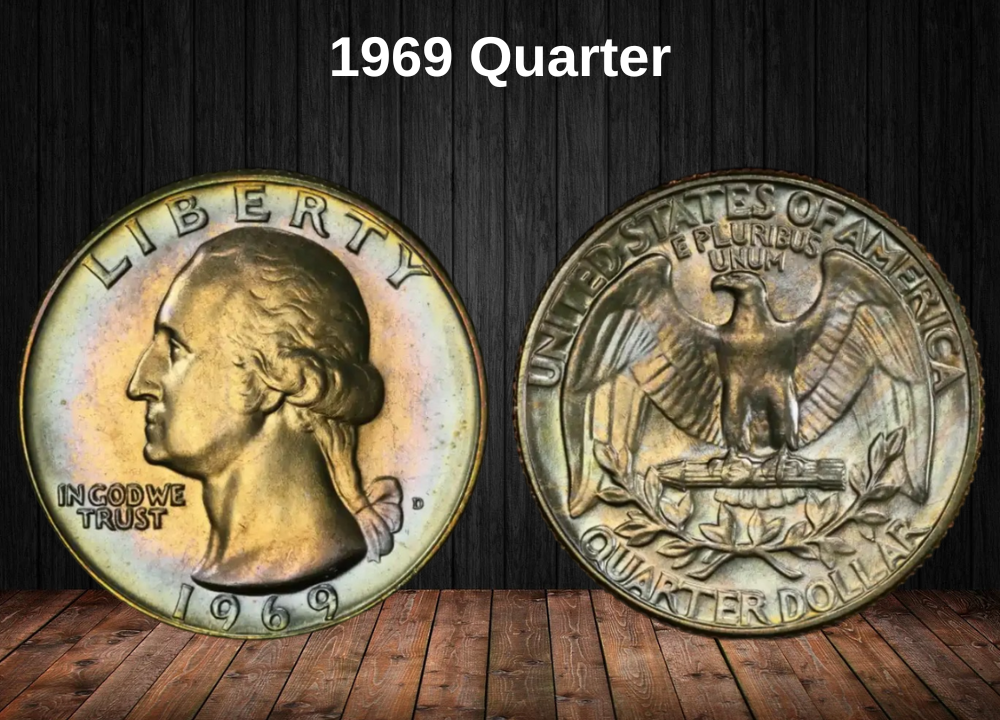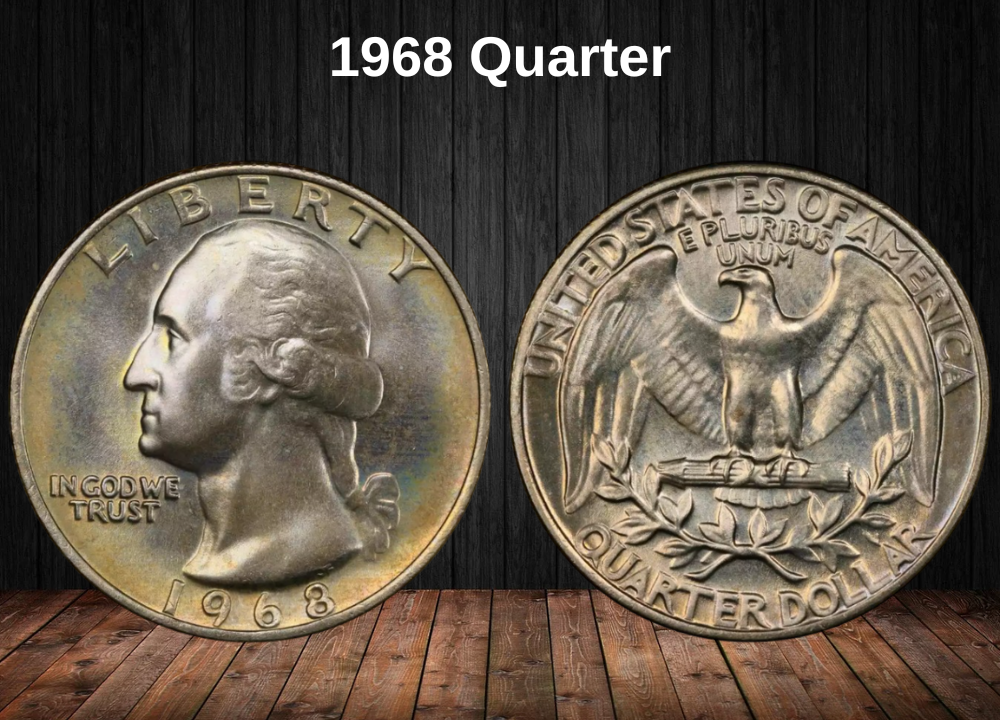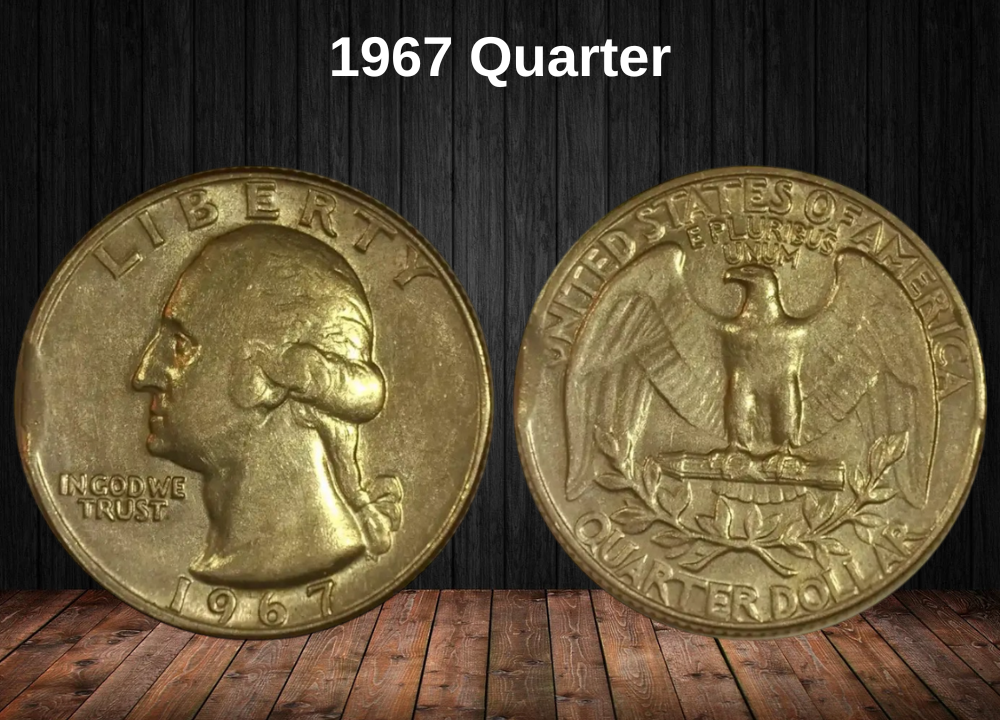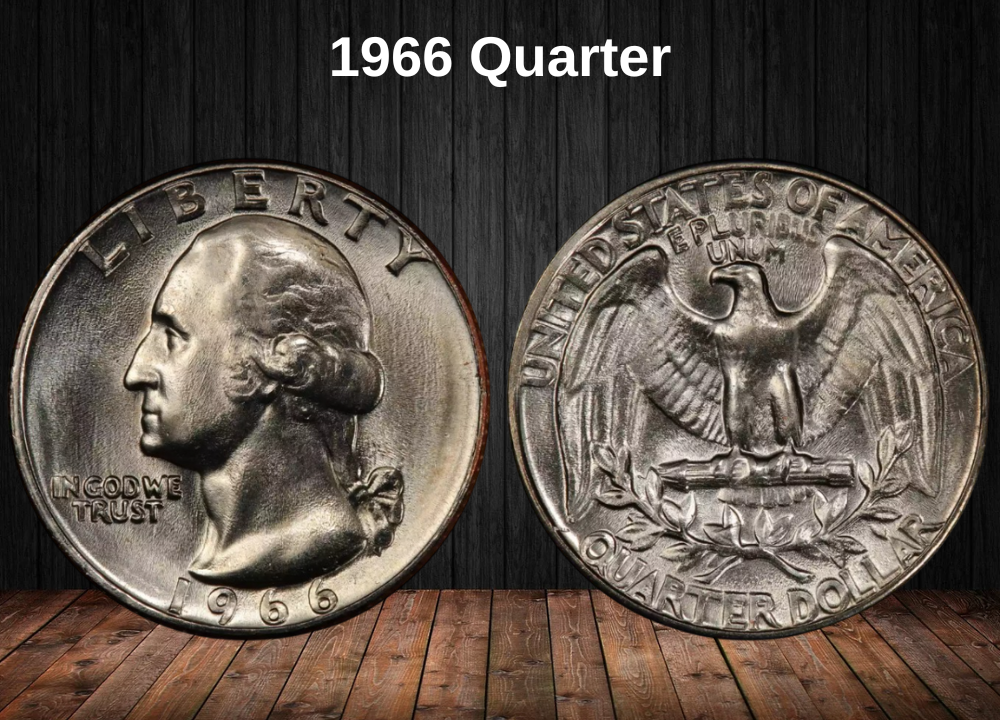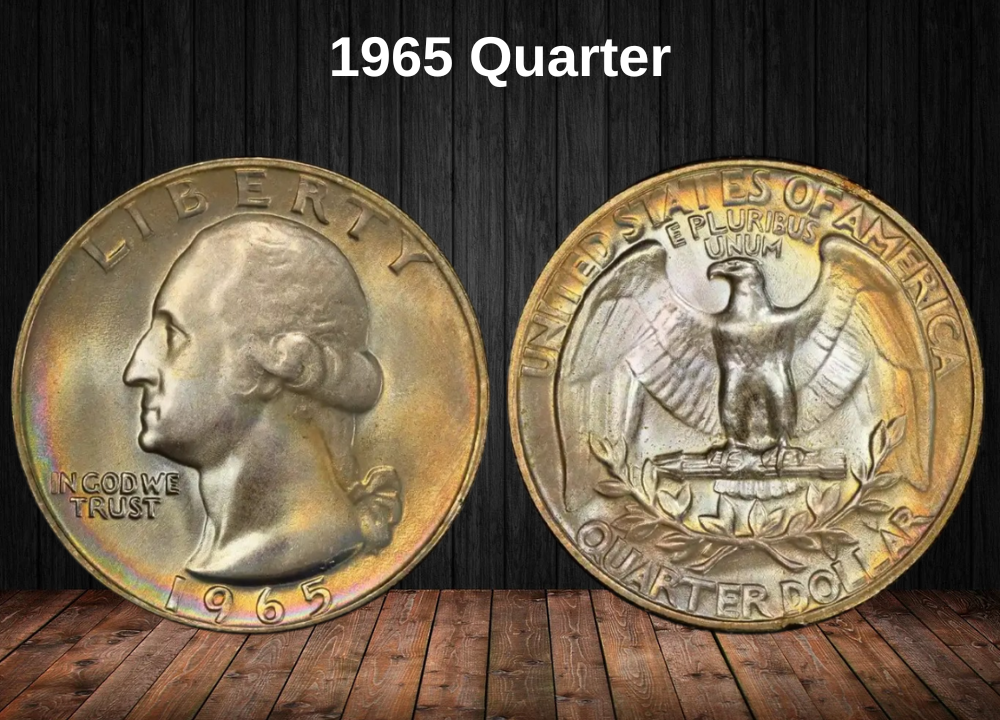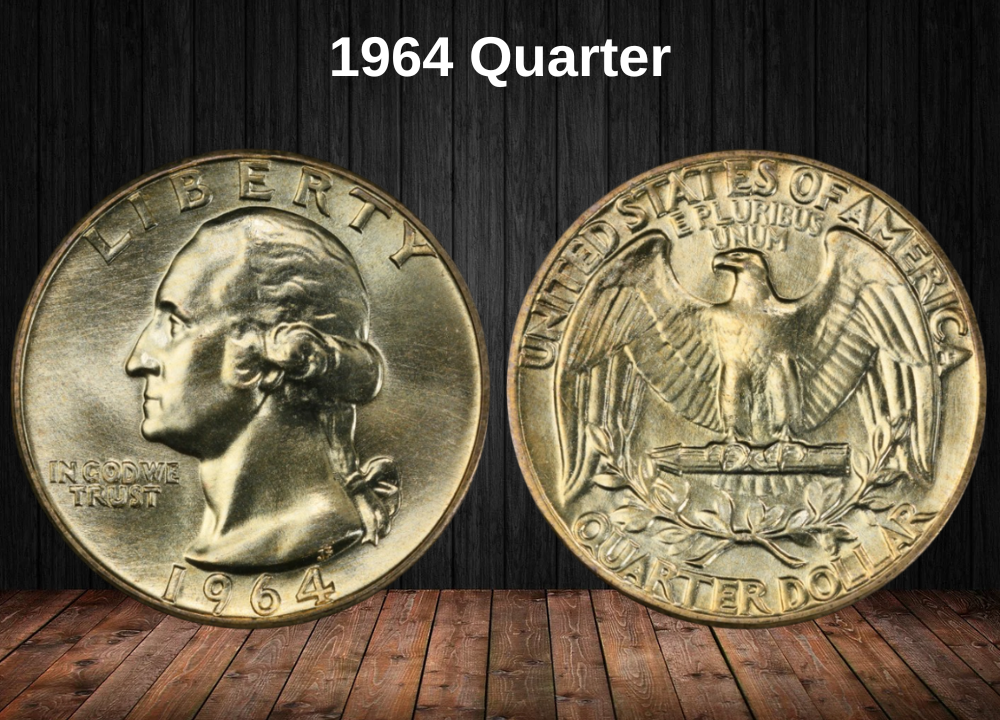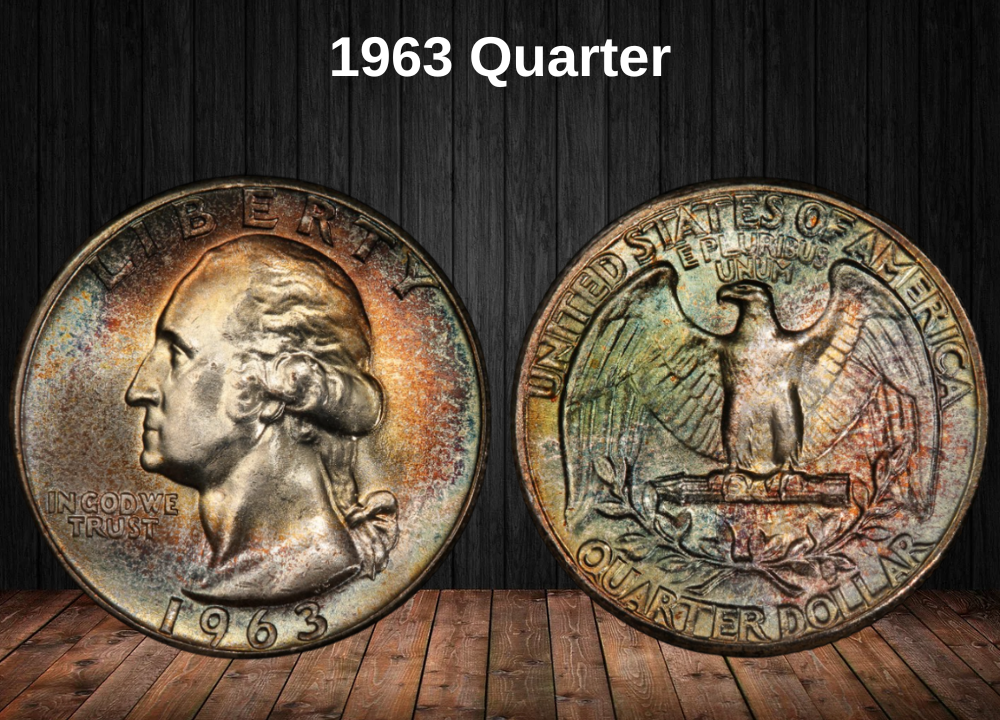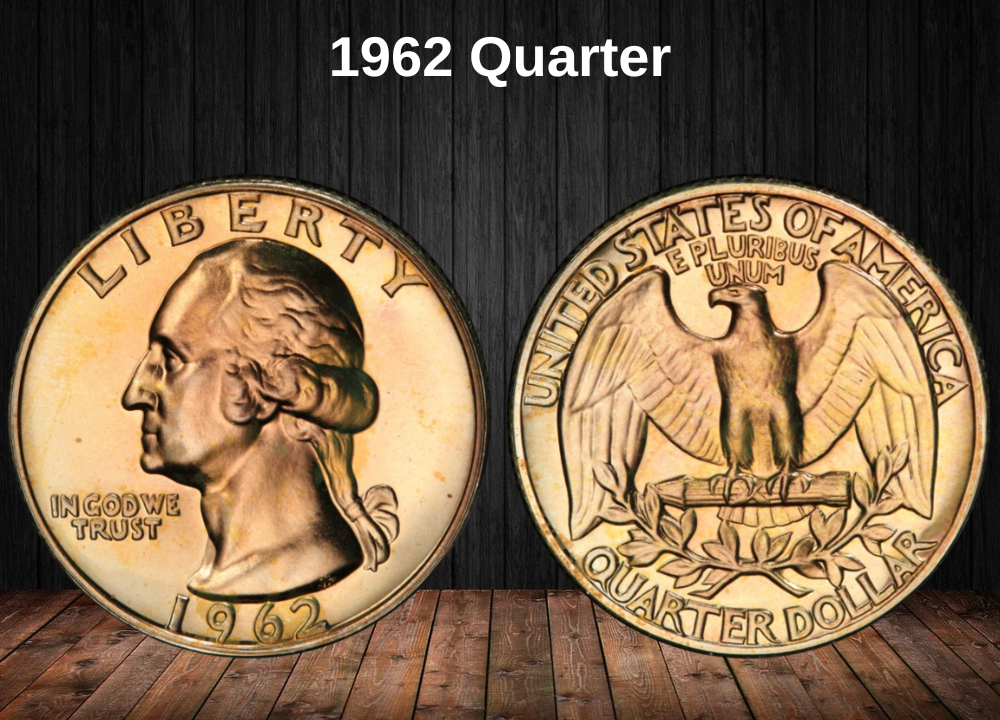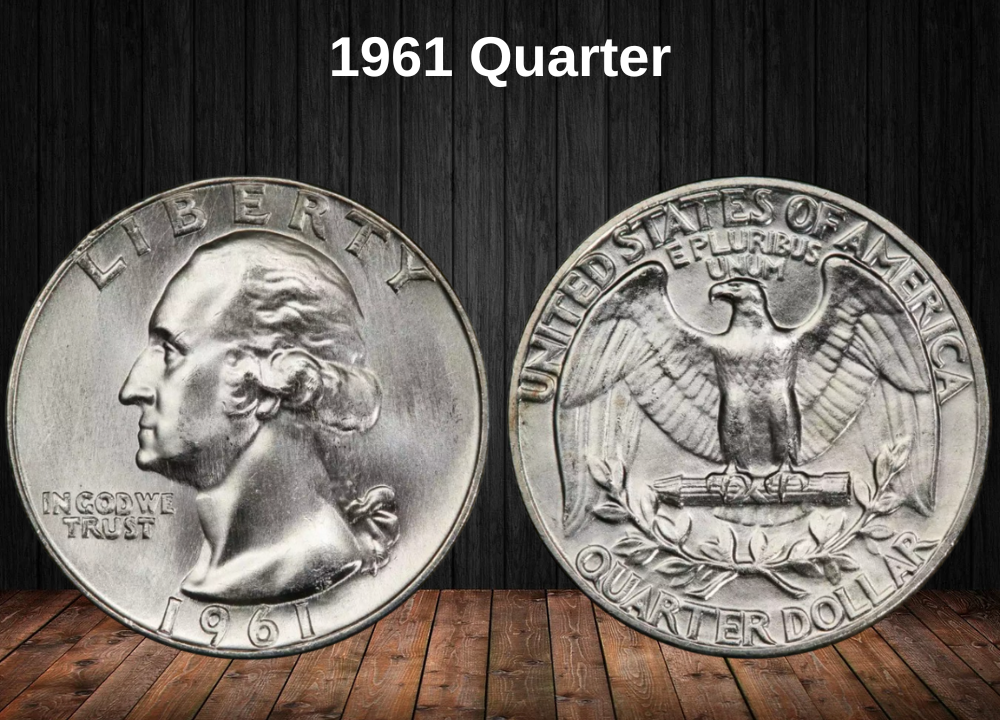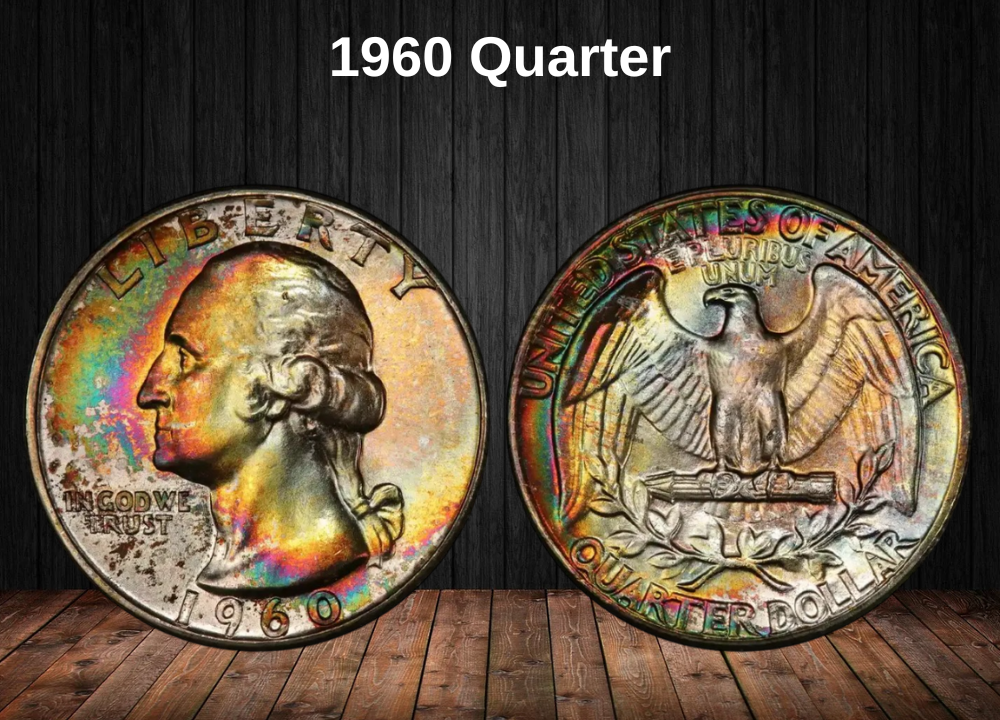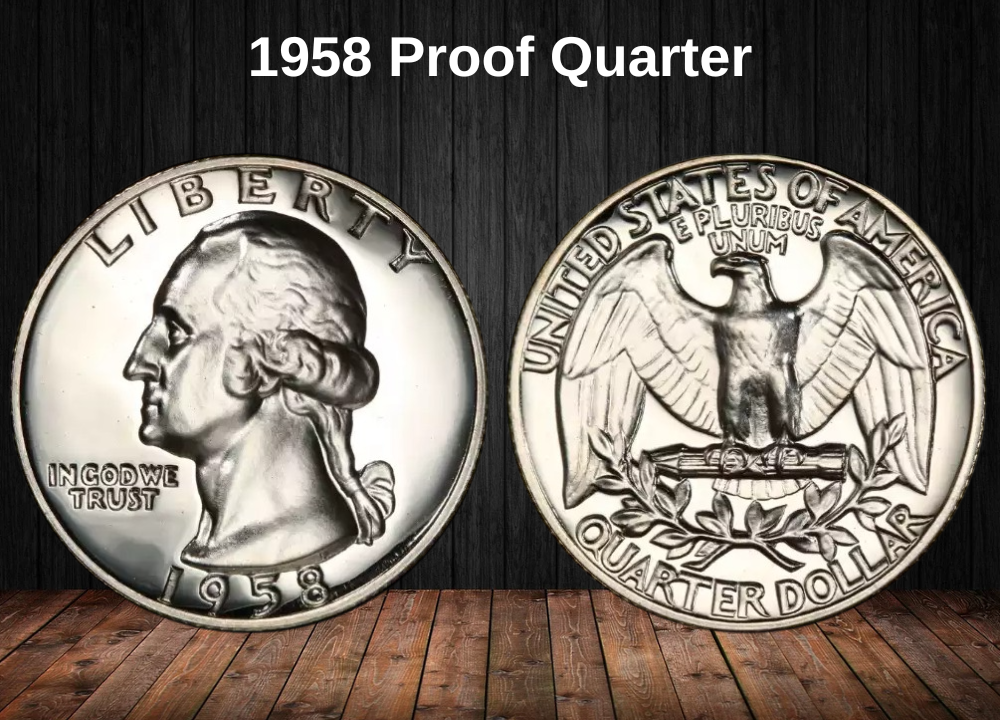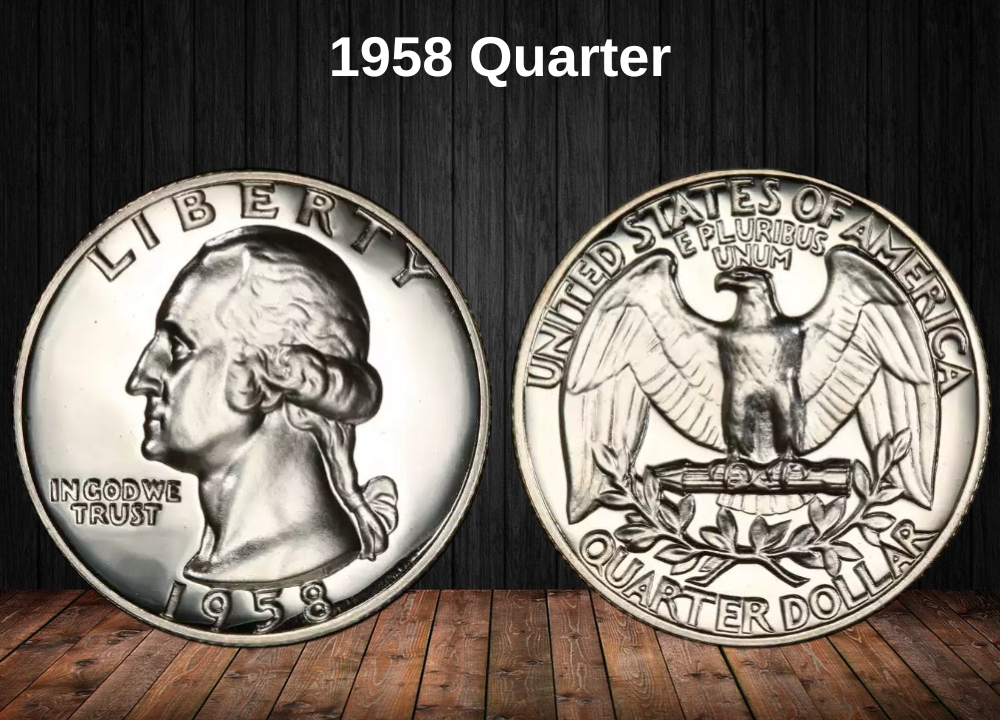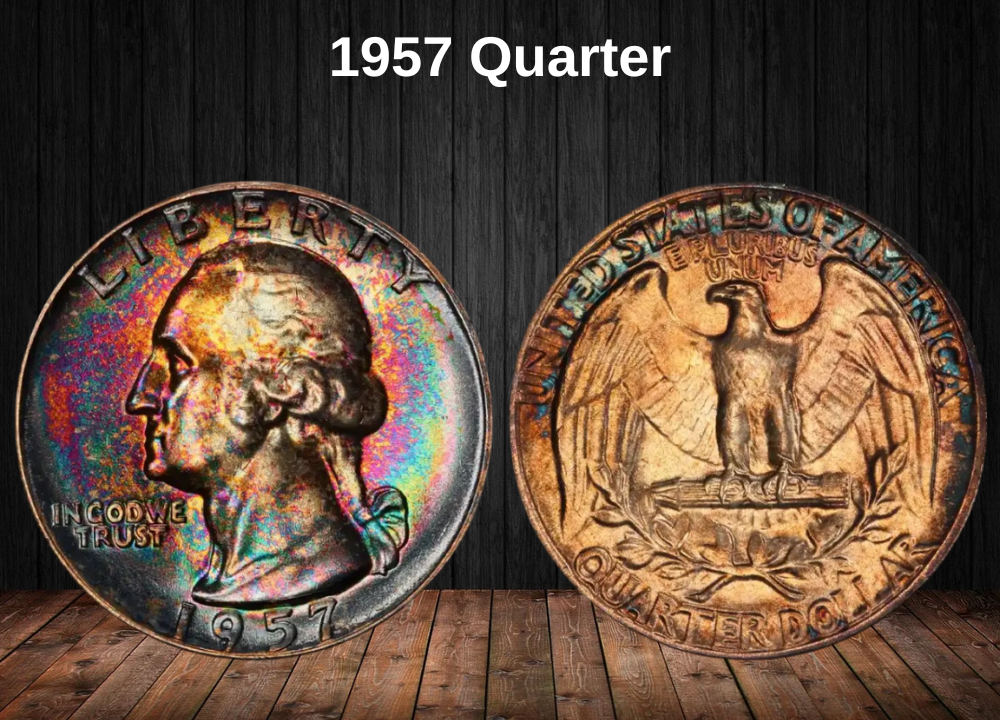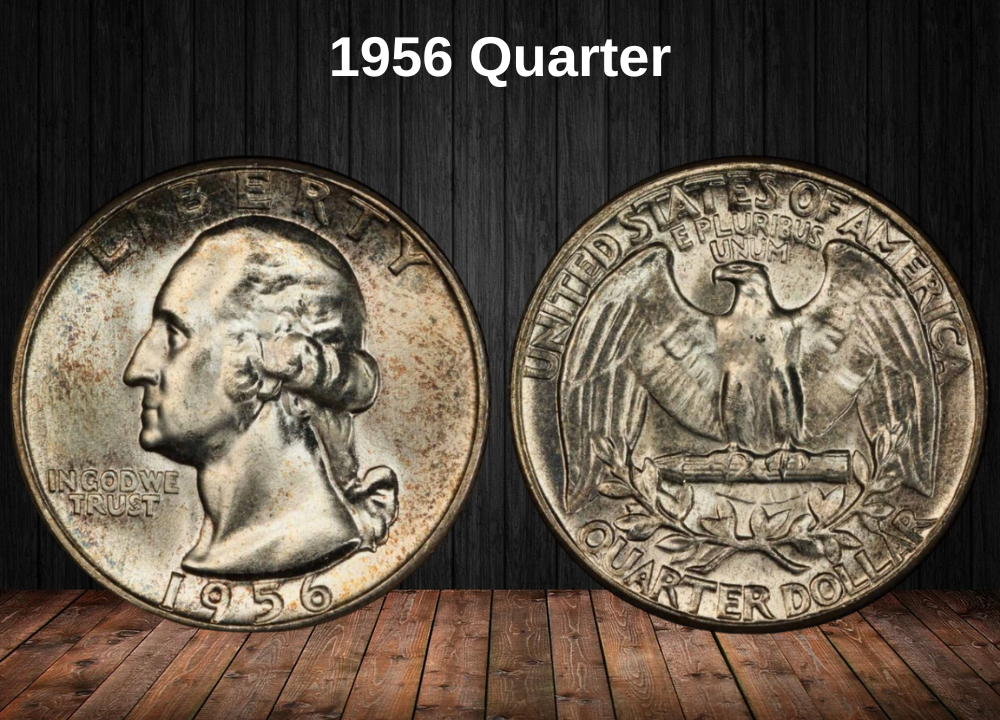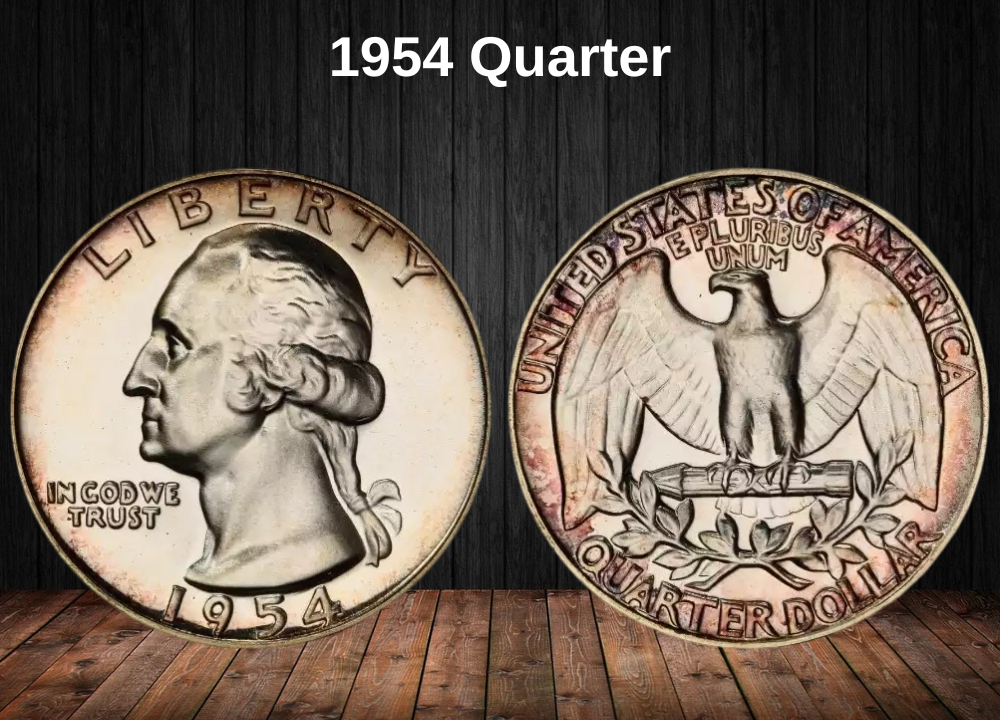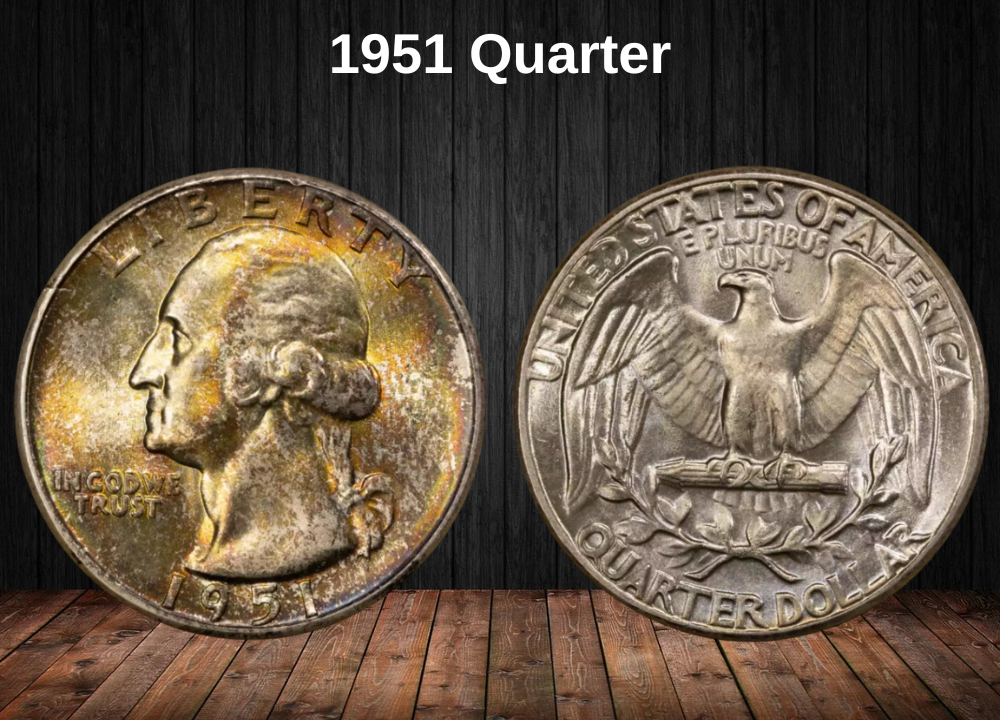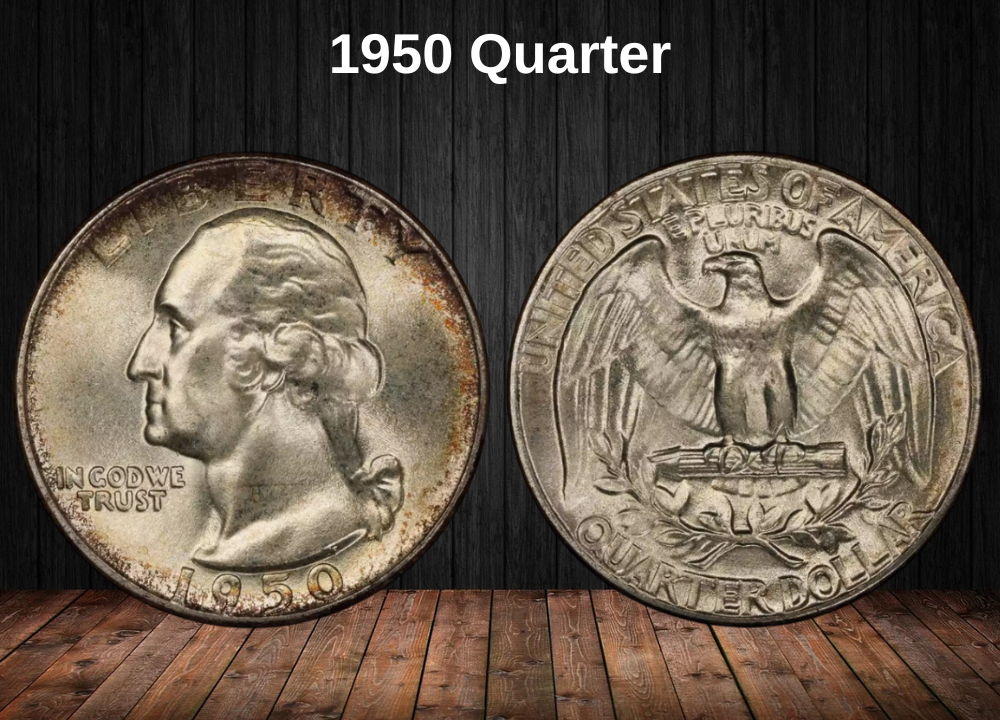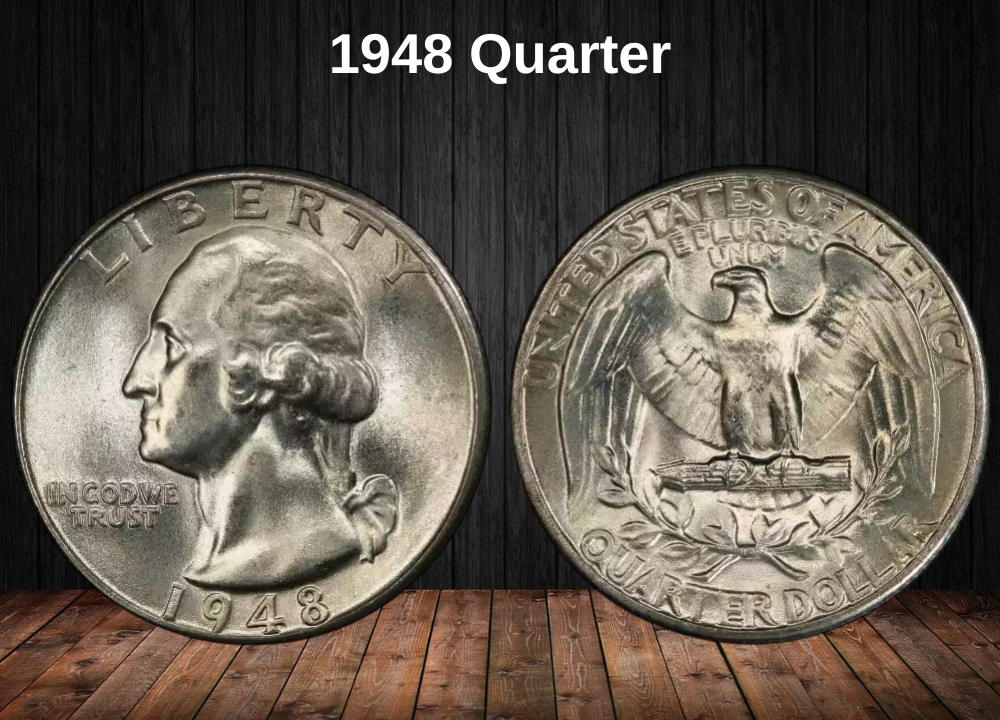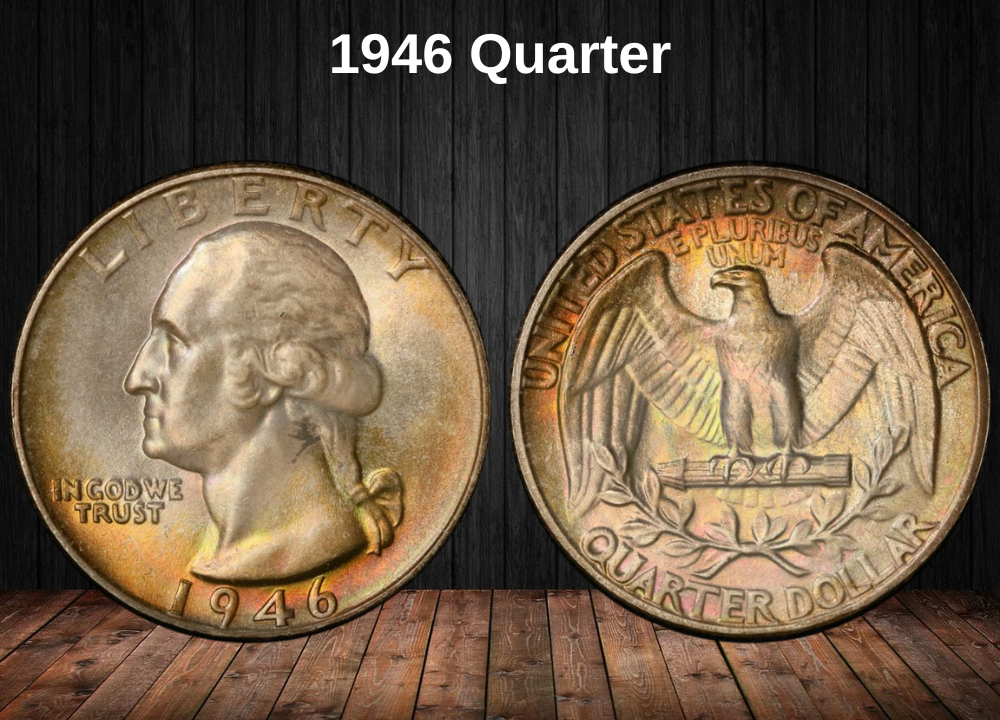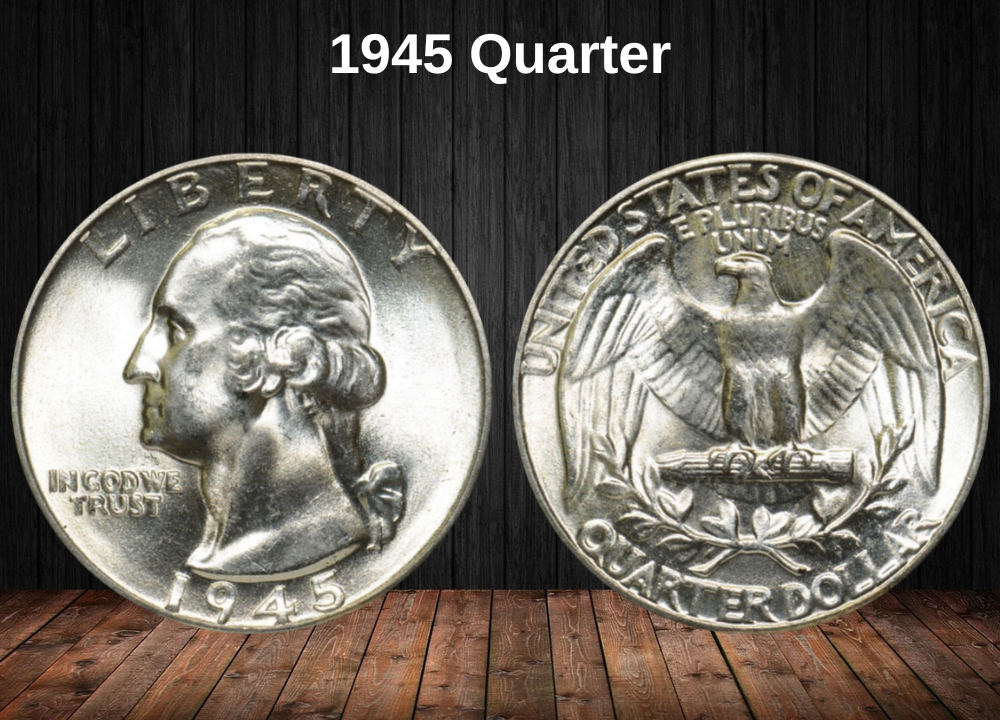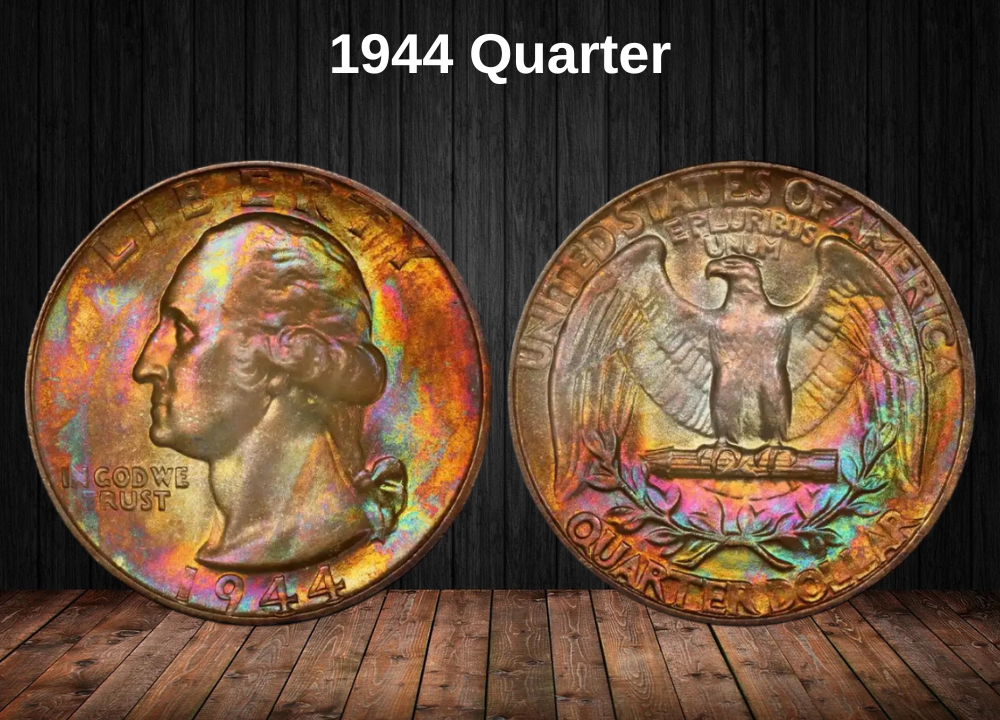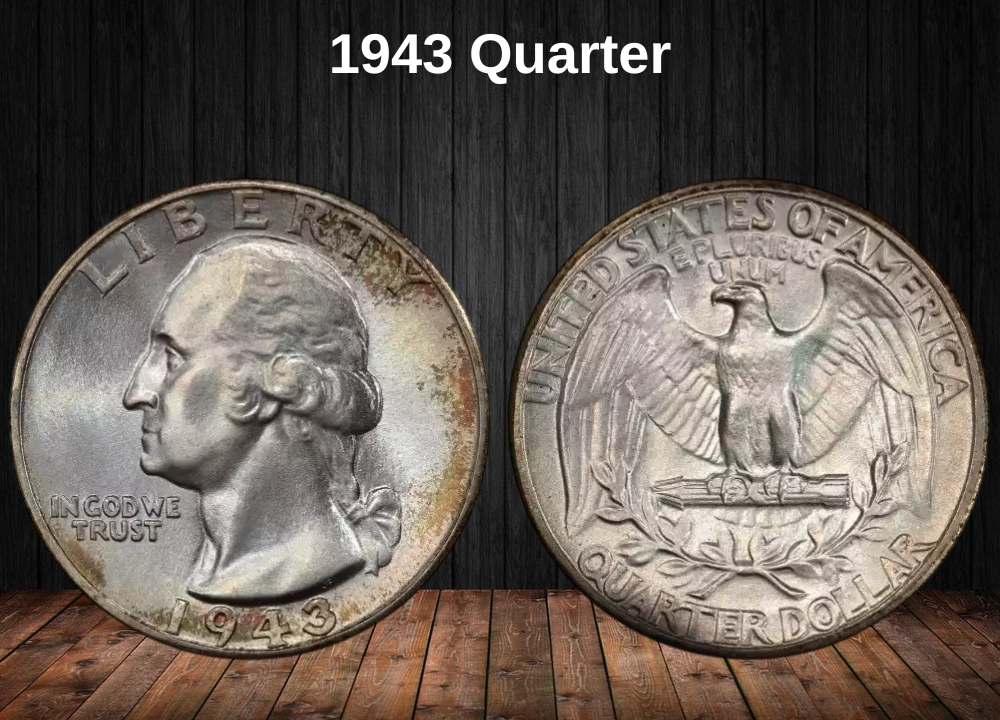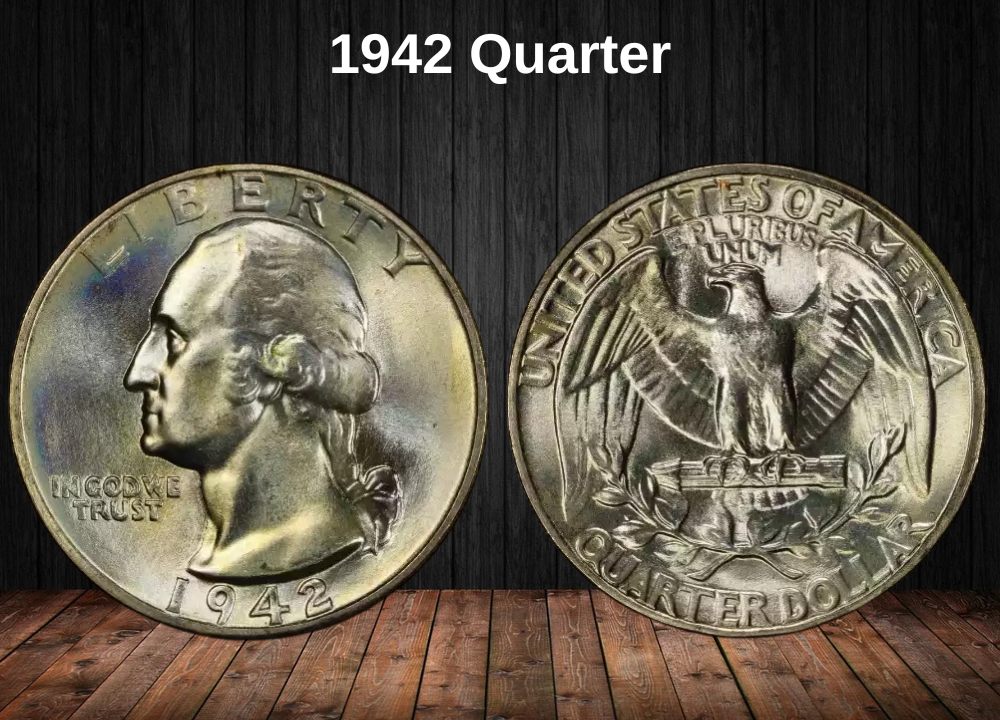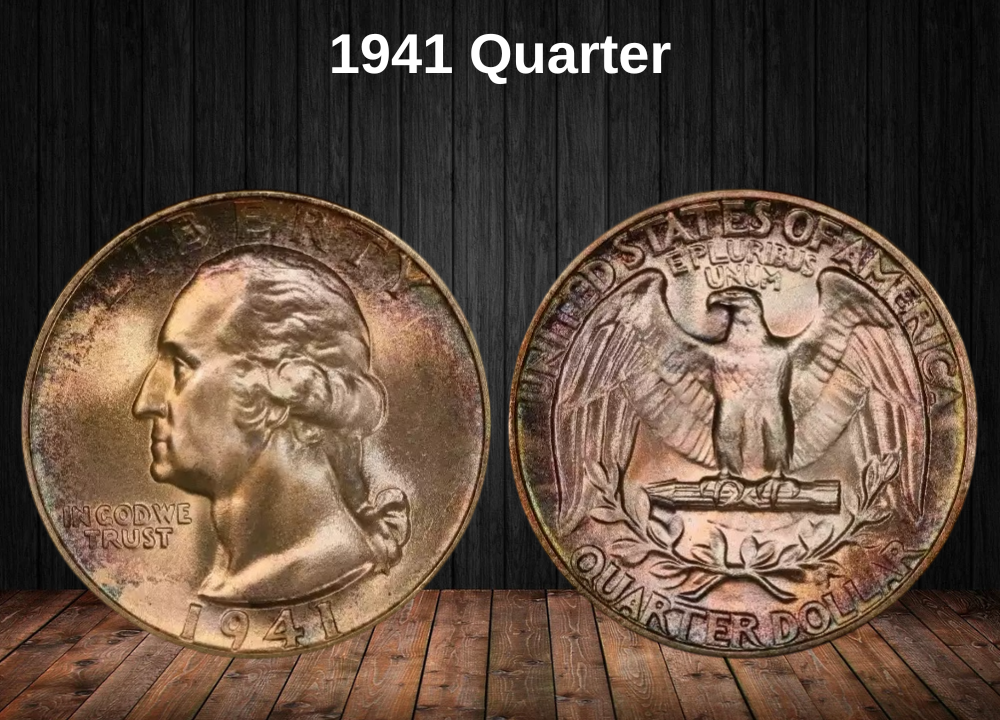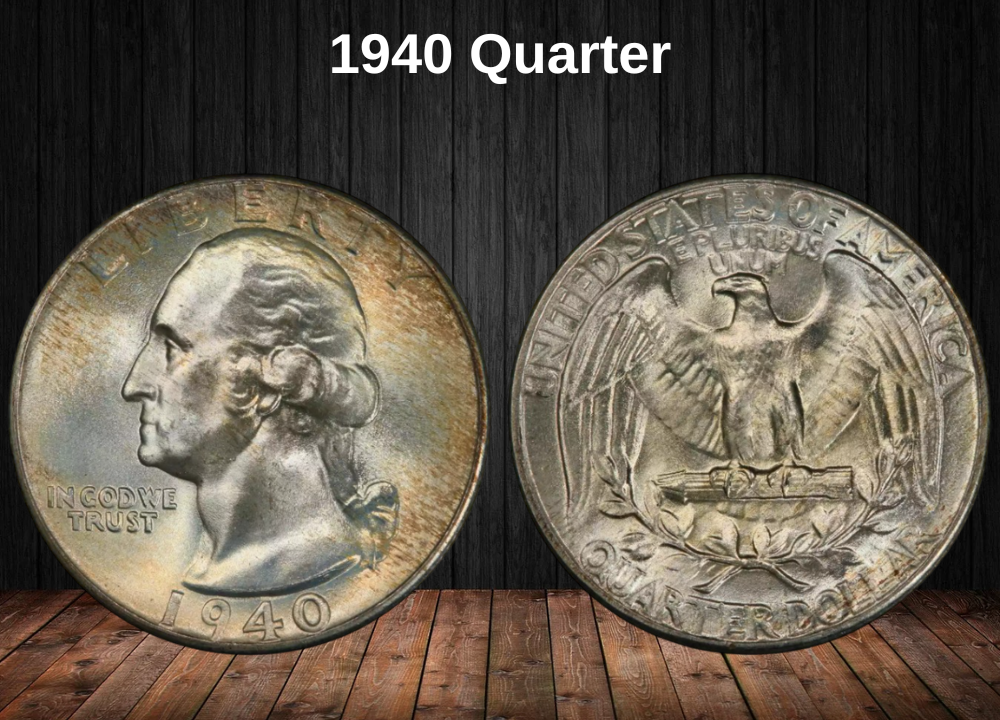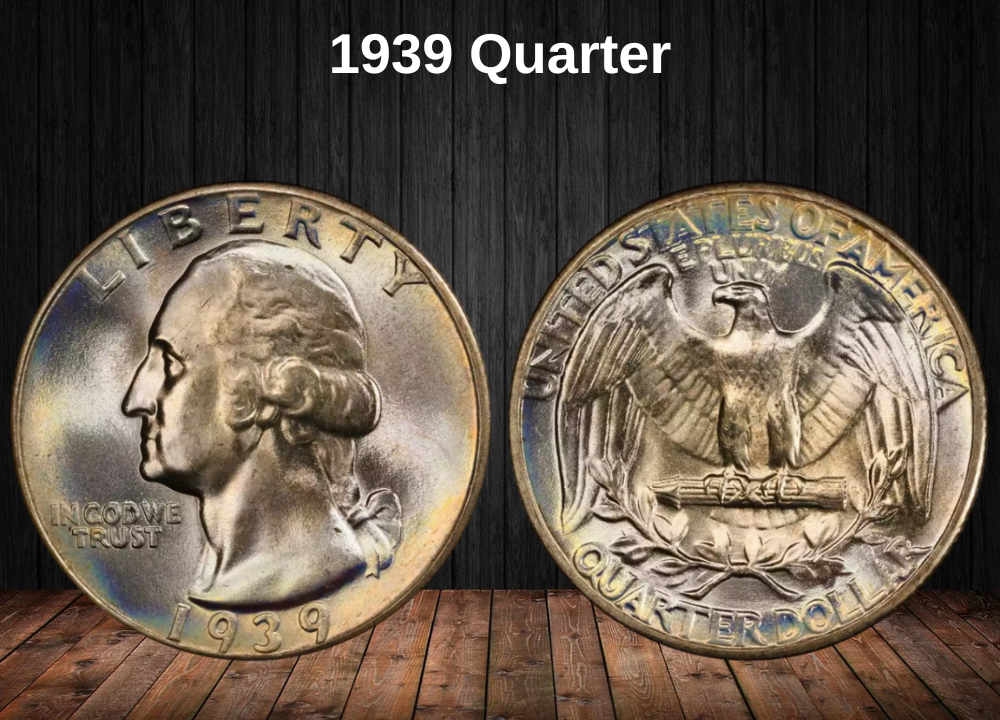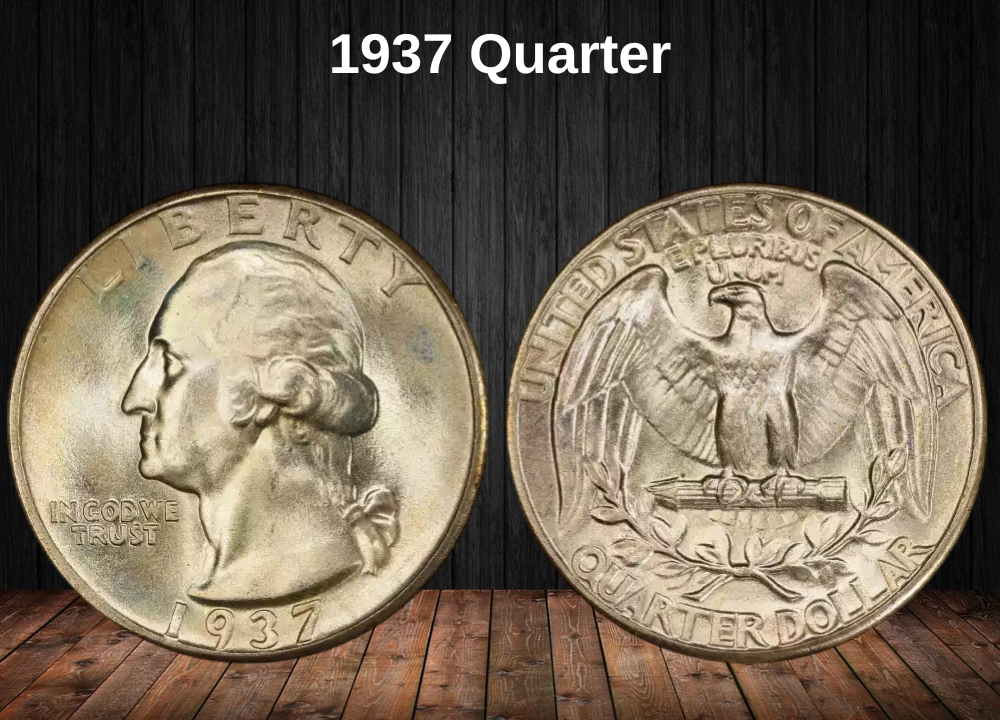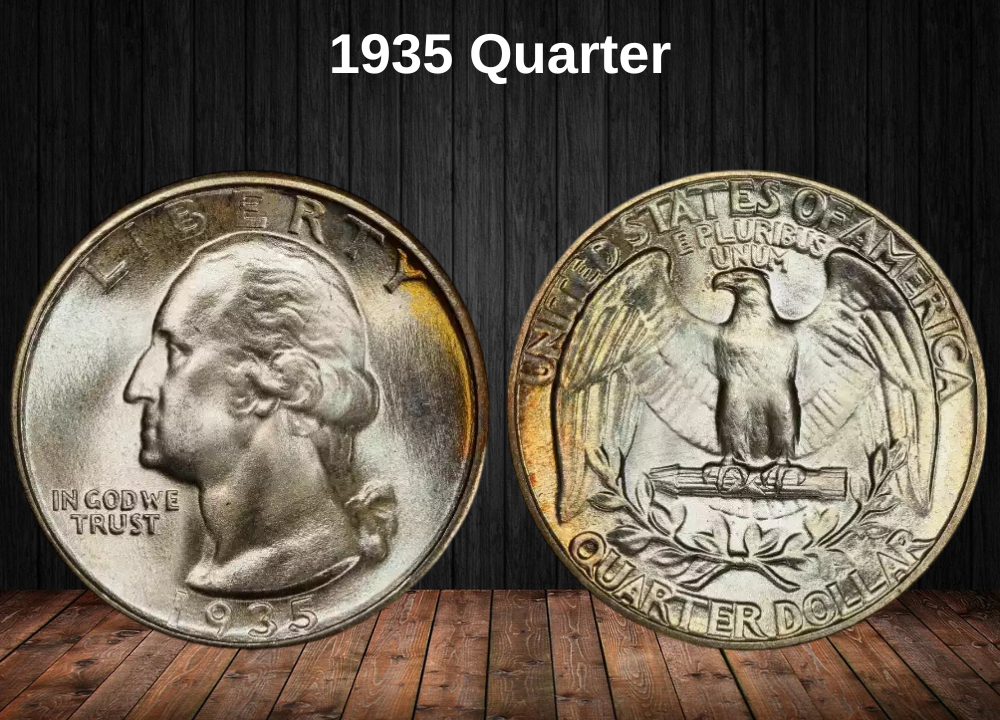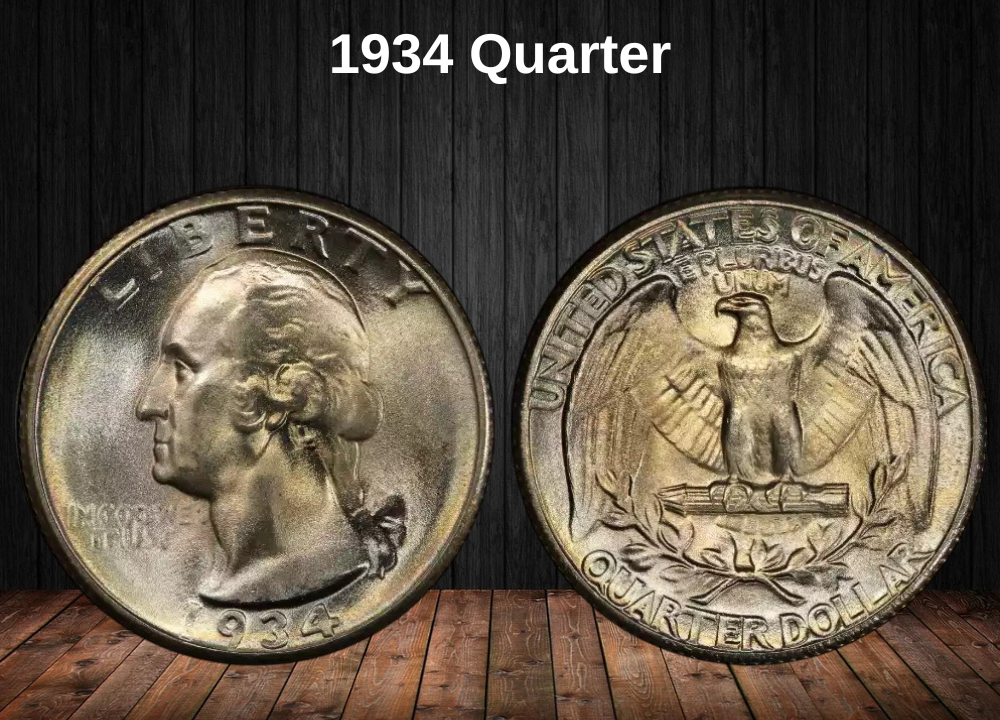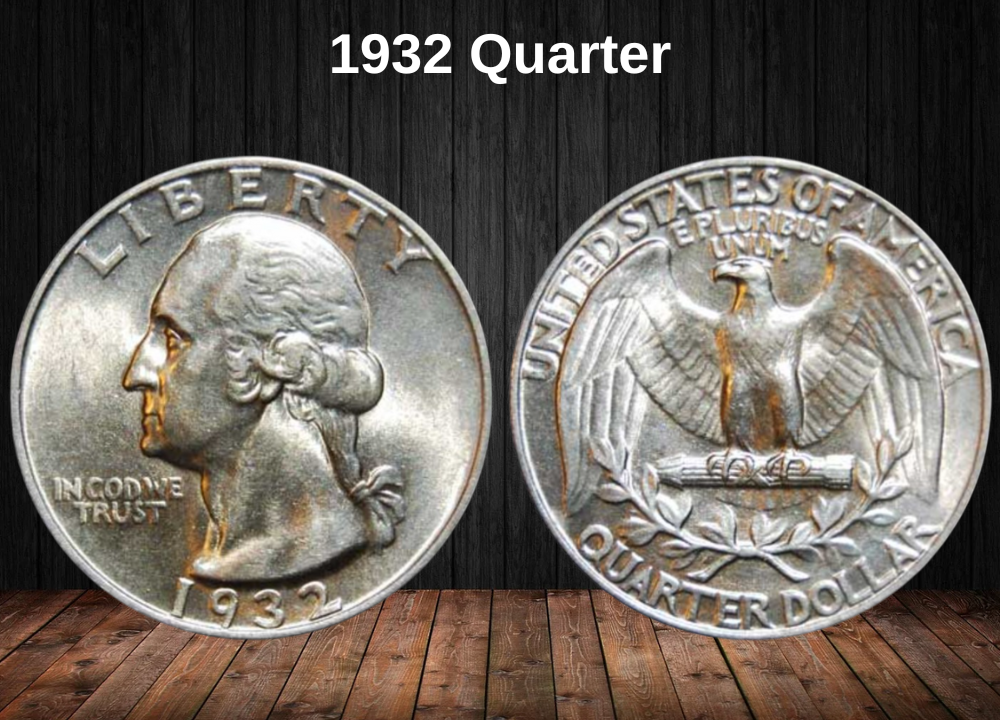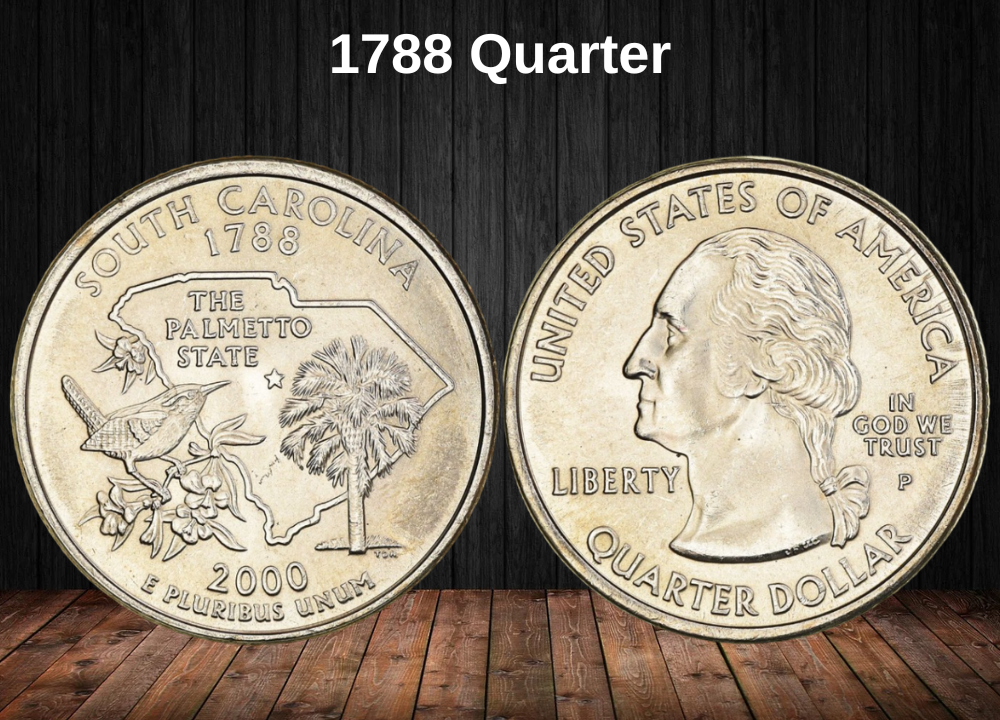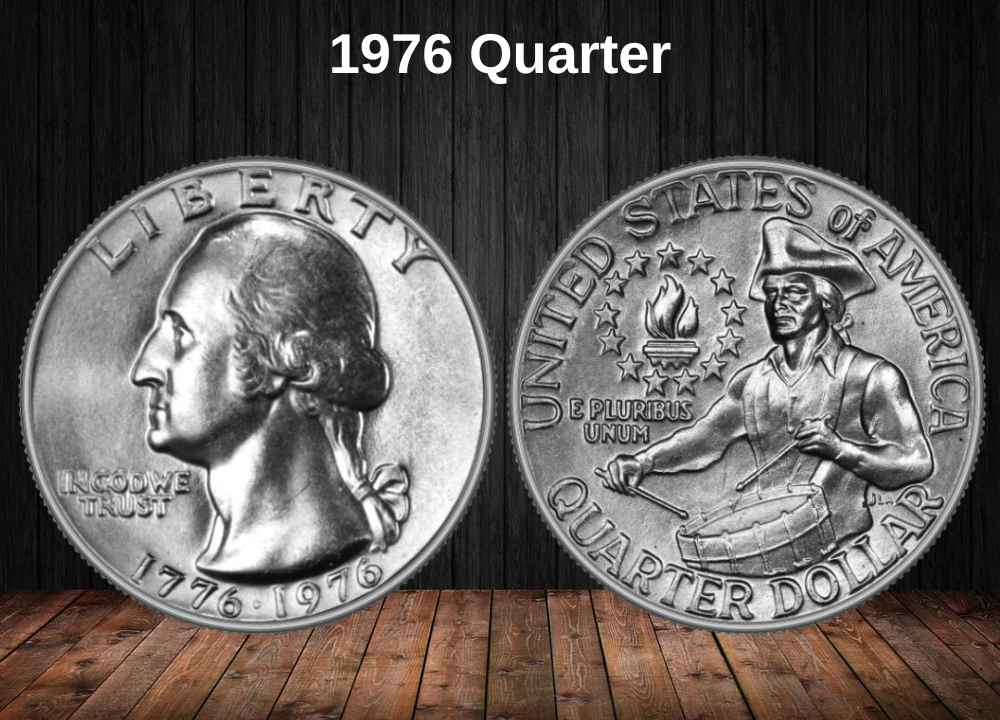The 1978 Washington Quarter is a late clad-era issue that shows how condition, mint mark, and proof quality drive modern coin values. While circulated examples remain common at face value, uncirculated coins in higher Mint State grades bring collector premiums, especially from the Philadelphia Mint.
Proof issues struck in San Francisco also stand out—particularly the Deep Cameo (DCAM) varieties, which offer beautiful contrast and remain popular with collectors building proof sets.
Overall, the 1978 quarter is a great example of how even a common circulation coin can carry value when preserved in pristine condition or when struck with superior proof characteristics.
1978 Quarter Value By Variety
Here’s a detailed breakdown of what 1978 quarters are worth depending on condition and mint mark:
| TYPE | GOOD | FINE | AU | MS | PR |
|---|---|---|---|---|---|
| 1978 No Mint Mark Quarter Value | $0.25 | $0.29 | $0.67 | $9.33 | — |
| 1978 D Quarter Value | $0.25 | $0.29 | $0.67 | $7.00 | — |
| 1978 S DCAM Quarter Value | — | — | — | — | $4.89 |
Top 7 Most Valuable 1978 Quarters Worth Money
| Rank | Coin / Variety | Grade | Value |
|---|---|---|---|
| 1 | 1978 No Mint Mark Quarter | MS-67 | $4,406 |
| 2 | 1978-D Quarter | MS-67 | $1,440 |
| 3 | 1978-S Proof Quarter (DCAM) | PR-70 DCAM | $575 |
| 4 | 1978 No Mint Mark Quarter | MS-66 | $215 |
| 5 | 1978-D Quarter | MS-66 | $160 |
| 6 | 1978-S Proof Quarter (CAM) | PR-69 CAM | $85 |
| 7 | 1978-S Proof Quarter (DCAM) | PR-69 DCAM | $60 |
History of the 1978 Quarter
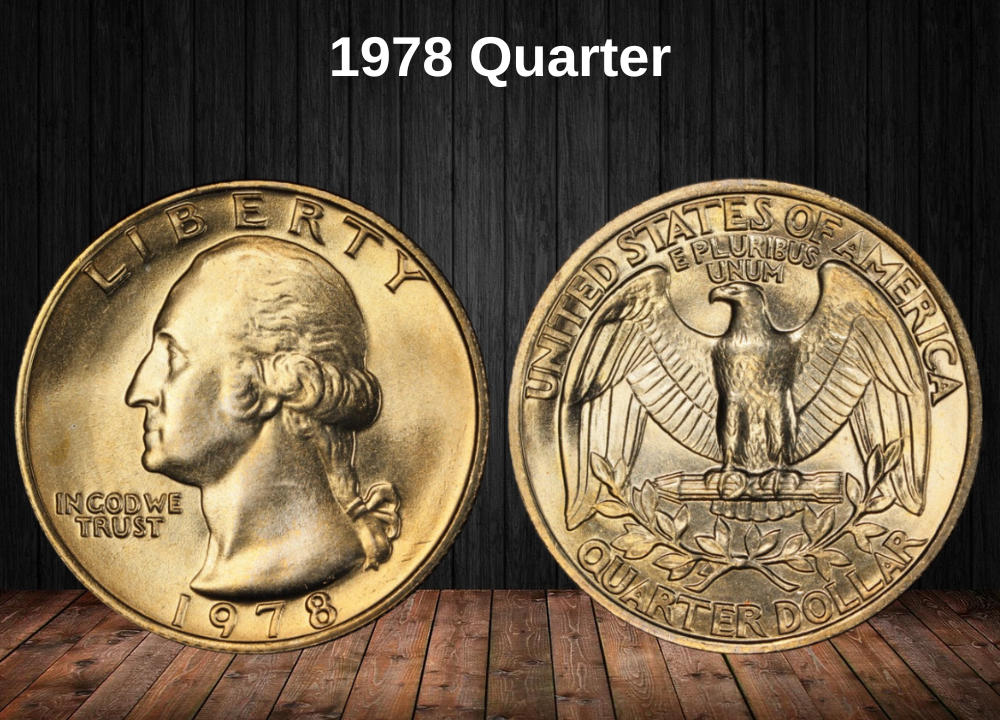
The 1978 Washington Quarter belongs to the copper-nickel clad era that began in 1965, after rising silver prices forced the U.S. Mint to eliminate silver from quarters. By 1978, the clad composition had already become the standard, and the Washington quarter design had been in circulation for over four decades.
John Flanagan’s portrait of George Washington, first introduced in 1932 for the bicentennial of Washington’s birth, remained unchanged. This continuity gave the series a sense of tradition, though collectors were beginning to anticipate changes that would eventually arrive with the 1976 Bicentennial design and later state quarters in 1999.
In 1978, three mints produced quarters:
- Philadelphia (no mint mark)
- Denver (“D”)
- San Francisco (“S”) for proof coins
Circulation strikes were produced in the hundreds of millions, ensuring that 1978 quarters were plentiful in pocket change. However, finding examples in pristine Mint State condition with sharp luster and no contact marks proved challenging, especially for the Denver issue.
San Francisco’s proof quarters of 1978 added another layer of collectibility. These were struck with polished dies for sharp detail and mirror-like fields, with some achieving the coveted Cameo (CAM) or Deep Cameo (DCAM) designations.
While 1978 quarters were considered ordinary at the time, today they represent a bridge between the classic Washington quarter design and the major coinage innovations of the late 20th century. High-grade survivors and proof varieties remain the most desirable among collectors.
Key Features of the 1978 Quarter
The 1978 Washington Quarter continued the long-running design by sculptor John Flanagan, first introduced in 1932. By this year, the design had become iconic, though its technical details still reflected the Mint’s clad composition era.
The Obverse of the 1978 Quarter
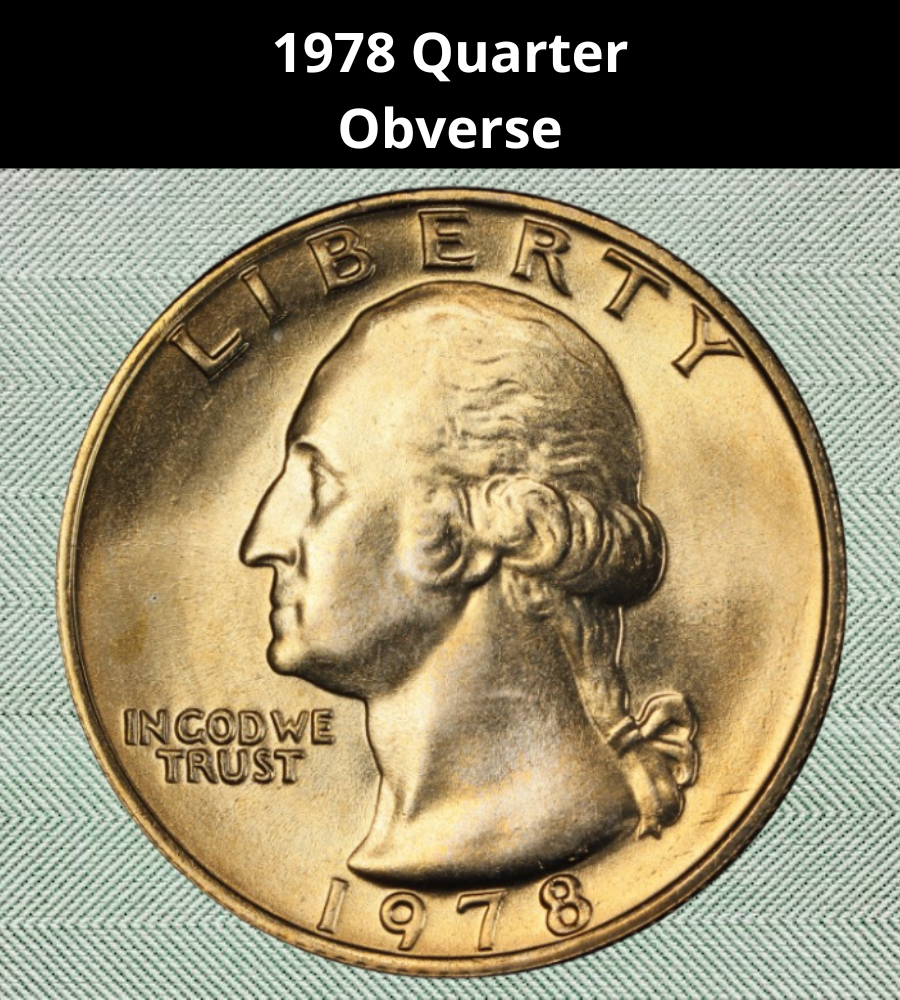
- Features a left-facing profile of George Washington, modeled after Jean-Antoine Houdon’s 1785 bust.
- LIBERTY appears boldly across the top rim.
- The motto IN GOD WE TRUST is inscribed to the left of Washington’s neck.
- The year 1978 is positioned at the bottom rim.
- Flanagan’s initials, JF, are subtly placed at the neckline truncation.
The Reverse of the 1978 Quarter
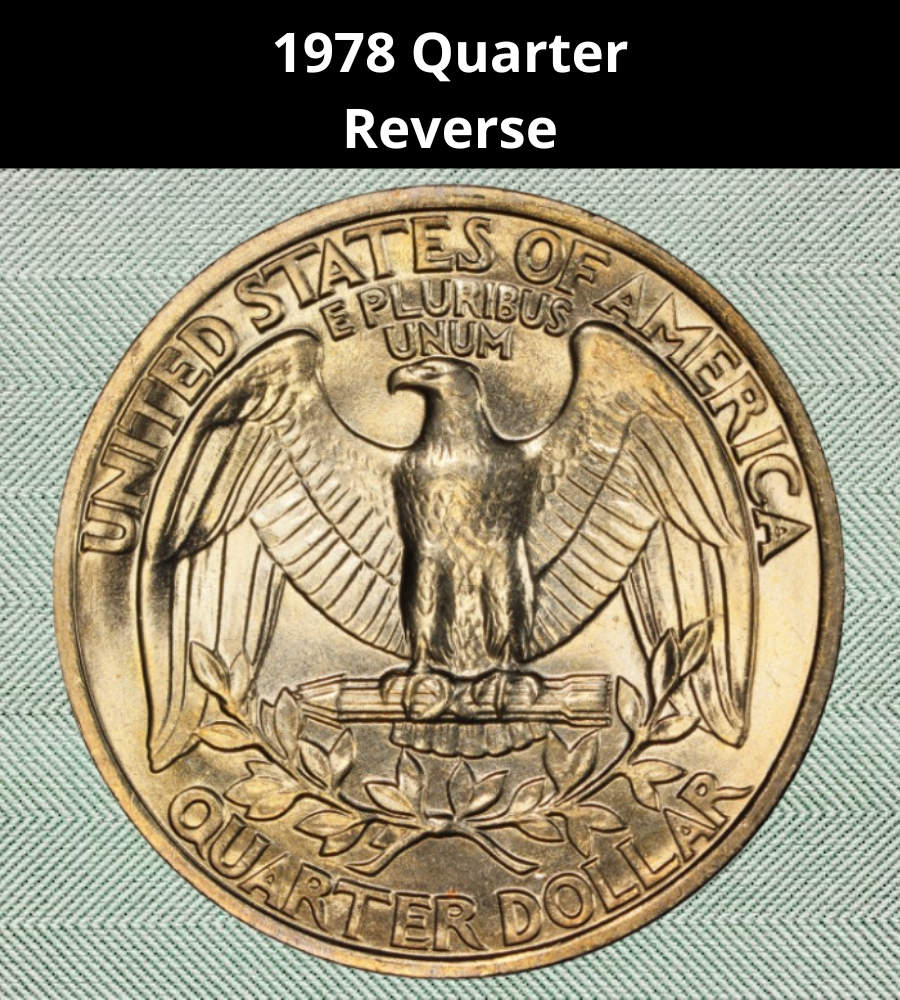
- Displays a heraldic eagle with outstretched wings, perched on a bundle of arrows, symbolizing American strength and readiness to defend.
- Below the eagle are two olive branches, representing peace, forming a semicircular wreath.
- Inscriptions include:
- UNITED STATES OF AMERICA across the top.
- The motto E PLURIBUS UNUM just above the eagle’s head.
- QUARTER DOLLAR, the denomination, along the bottom rim.
Other Features of the 1978 Quarter
- Composition: 91.67% copper, 8.33% nickel (copper-nickel clad).
- Weight: 5.67 grams.
- Diameter: 24.3 mm.
- Thickness: 1.75 mm.
- Edge: Reeded (119 reeds).
- Mint Marks:
- No mint mark = Philadelphia
- “D” = Denver
- “S” = San Francisco (proof coins only)
The 1978 quarter holds no silver content, but its design and composition firmly connect it to the modern era of U.S. coinage, bridging the transition between everyday circulation coins and collectible proof issues.
1978 Quarter Grading
Grading plays a crucial role in determining the value of a 1978 Washington quarter. While circulated examples usually remain at face value, Mint State (MS) and Proof (PR) grades can command collector premiums. The table below outlines the main grade levels and what to look for in each.
| Grade | Description | Key Details |
|---|---|---|
| Good (G-4) | Heavily worn; Washington’s portrait flat with major details missing. | LIBERTY and date visible but faint. |
| Fine (F-12) | Moderate wear; Washington’s hair shows some definition. | Motto and date clear, though not sharp. |
| Extremely Fine (EF-40) | Light wear on high points, such as Washington’s hair and cheek. | Lettering sharp, eagle details partially visible. |
| About Uncirculated (AU-50) | Very slight wear on highest points only. | Strong luster remains, minor contact marks. |
| Mint State (MS-60 to MS-67) | No wear; condition depends on strike sharpness and luster. | MS-65+ examples are very scarce; MS-67+ highly valuable. |
| Proof (PR / CAM / DCAM) | Specially struck at San Francisco with mirror-like surfaces. | CAM (Cameo) shows frosted devices; DCAM (Deep Cameo) has strong frosted contrast and is the most desirable. |
1978 Quarter Value Guides
1978 No Mint Mark Quarter Value
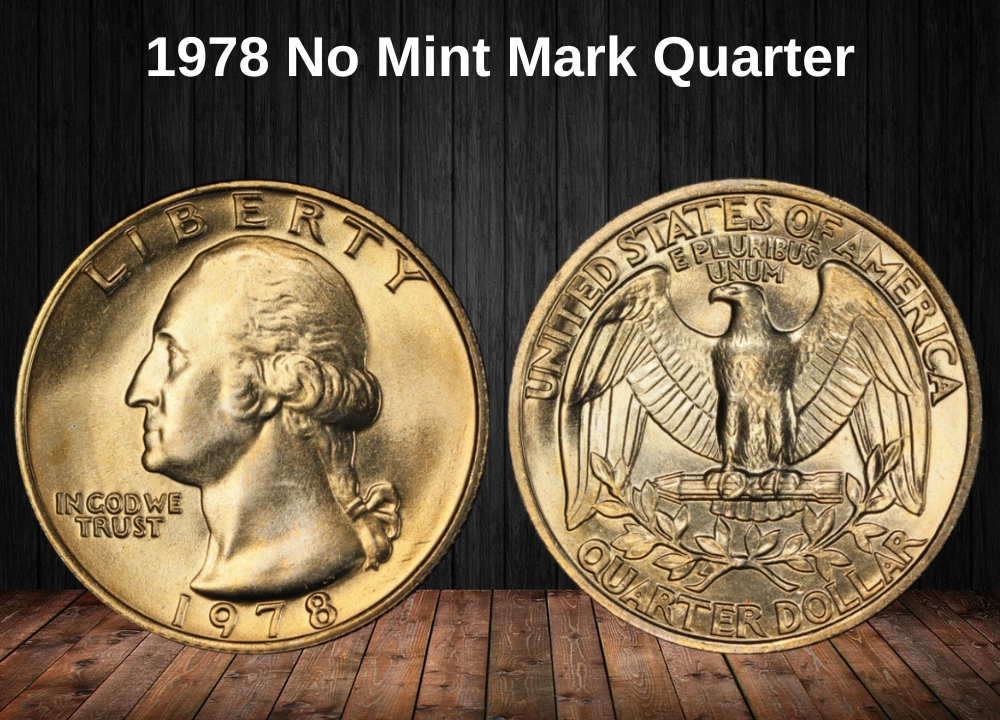
The 1978 No Mint Mark Washington quarter was struck at the Philadelphia Mint, with a mintage exceeding 521 million coins. Because of this enormous production, most examples remain common and trade for face value in circulated grades.
However, the true value appears in higher Mint State conditions. Well-preserved coins graded MS-65 or higher are far scarcer, with values climbing significantly due to collector demand. Coins with strong luster, sharp strike details, and minimal contact marks are the ones most likely to command premiums.
1978 No Mint Mark Quarter Value Chart
| Grade | Value |
|---|---|
| Good (G-4) | $0.25 |
| Fine (F-12) | $0.29 |
| About Uncirculated (AU-50) | $0.67 |
| Mint State (MS-60) | $3.00 |
| Mint State (MS-63) | $5.00 |
| Mint State (MS-65) | $9.33 |
| Mint State (MS-67) | $60 – $120+ |
1978-D Quarter Value
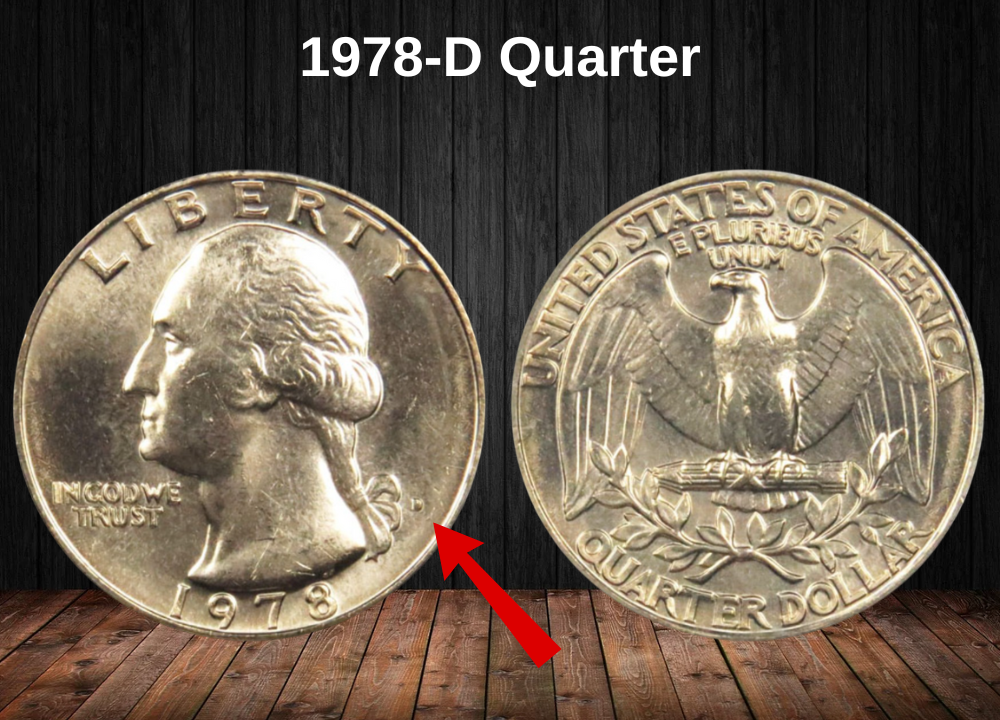
The 1978-D Washington quarter was struck at the Denver Mint, with an even higher mintage than Philadelphia—over 287 million coins. Like its Philadelphia counterpart, most circulated examples remain extremely common and trade only for face value.
The key to finding value in 1978-D quarters lies in uncirculated grades, where condition rarity begins to separate ordinary coins from collectible ones. Sharp strikes with clean surfaces are harder to come by, and certified examples in MS-65 or better often bring strong premiums at auction.
While not rare in general, high-grade Denver quarters are prized by Washington quarter collectors who seek to complete mint-marked sets from the clad era.
1978-D Quarter Value Chart
| Grade | Value |
|---|---|
| Good (G-4) | $0.25 |
| Fine (F-12) | $0.29 |
| About Uncirculated (AU-50) | $0.67 |
| Mint State (MS-60) | $2.50 |
| Mint State (MS-63) | $4.50 |
| Mint State (MS-65) | $7.00 |
| Mint State (MS-67) | $45 – $90+ |
1978-S DCAM Quarter Value
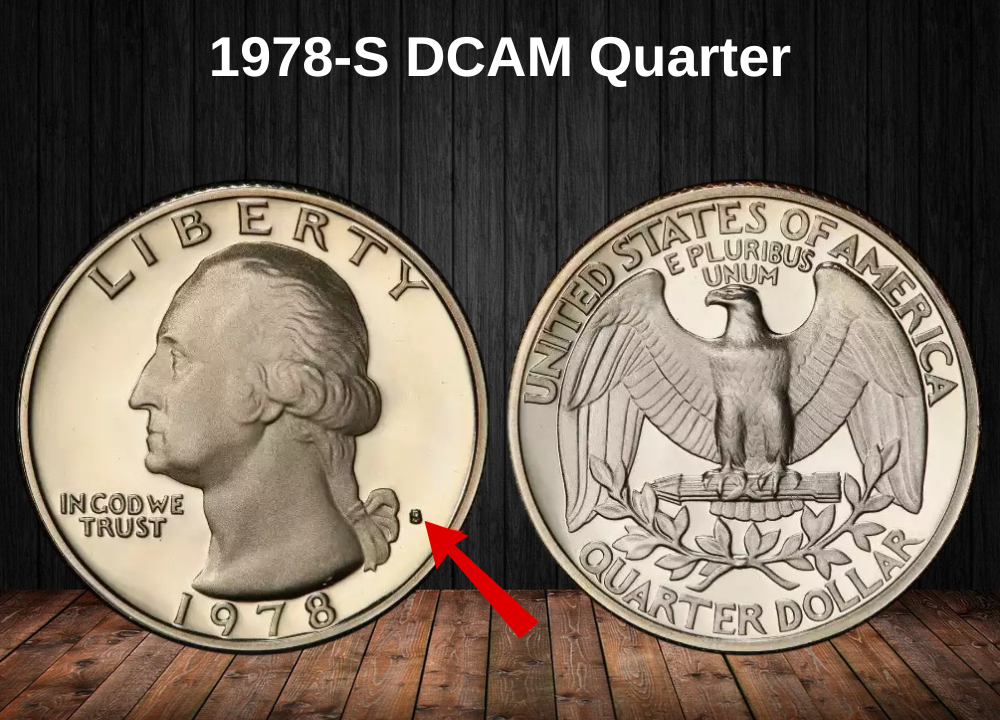
The 1978-S DCAM (Deep Cameo) Proof Quarter is the premium variety from San Francisco’s proof production. These coins were struck with specially polished dies and planchets, resulting in sharp frosted design elements that contrast dramatically against mirror-like fields.
While over 3.1 million proof quarters were minted in 1978, only a fraction exhibit the strong deep cameo contrast that earns the DCAM designation. Collectors highly prize these coins for their visual appeal and their representation of late-1970s minting quality.
The value of a 1978-S DCAM quarter depends heavily on preservation. Lower proof grades remain affordable, but near-perfect specimens in PR-69 DCAM or the elusive PR-70 DCAM can command significant premiums.
1978-S DCAM Quarter Value Chart
| Grade | Value |
|---|---|
| Proof (PR-60) | $2.00 |
| Proof (PR-63) | $3.00 |
| Proof (PR-65) | $3.75 |
| Proof (PR-67) | $4.25 |
| Proof (PR-69 DCAM) | $4.89 |
| Proof (PR-70 DCAM) | $75 – $125+ |
Rare 1978 Quarter Error List
While the 1978 Washington quarter is generally common, a handful of rare error varieties transform these otherwise ordinary clad coins into highly collectible pieces. Below are the most notable errors from this year, with explanations and updated value charts.
1. 1978-D Doubled Die Obverse (DDO)
One of the most dramatic 1978 errors is the Doubled Die Obverse, most visible in the inscriptions “LIBERTY” and “IN GOD WE TRUST.” Washington’s profile sometimes shows extra thickness in the hair and facial features.
These doubling errors occurred when the working die received multiple hub impressions slightly misaligned. Genuine examples are scarce, especially in mint state.
Value Chart – 1978-D Doubled Die Obverse (DDO)
| Grade | Value Range |
|---|---|
| VF-20 | $25 – $40 |
| EF-40 | $50 – $90 |
| AU-50 | $100 – $175 |
| MS-60 | $200 – $300 |
| MS-63 | $400 – $600 |
| MS-65 | $1,000+ |
2. 1978-D Repunched Mint Mark (RPM)
Because mint marks were still applied by hand in 1978, some Denver quarters show a Repunched Mint Mark (RPM). The “D” mint mark may appear doubled, often with a shadow-like secondary punch north or northeast of the primary mark.
This variety is popular with specialists because it highlights the pre-computerized minting process.
Value Chart – 1978-D RPM
| Grade | Value Range |
|---|---|
| VF-20 | $15 – $25 |
| EF-40 | $30 – $50 |
| AU-50 | $60 – $100 |
| MS-60 | $120 – $175 |
| MS-63 | $250 – $375 |
| MS-65 | $600+ |
3. 1978 Off-Center Strike
Some 1978 quarters left the Mint with dramatic off-center strikes, where part of the design is missing because the planchet was misaligned during striking. The degree of the off-center determines value—coins showing 10–20% off-center with a visible date are the most desirable.
Value Chart – 1978 Off-Center Strike
| Grade | Value Range |
|---|---|
| Minor Off-Center (5–10%) | $20 – $50 |
| Moderate Off-Center (10–20%) | $75 – $150 |
| Major Off-Center (30–50%) | $200 – $500+ |
4. 1978 Clipped Planchet Error
Clipped planchet errors occur when the coin blank overlaps during cutting, leaving a curved “clip” missing from the coin’s edge. These errors are visually striking and easy for beginners to identify.
Value Chart – 1978 Clipped Planchet
| Grade | Value Range |
|---|---|
| VF-20 | $20 – $30 |
| EF-40 | $40 – $65 |
| AU-50 | $75 – $110 |
| MS-63 | $150 – $225 |
5. 1978 Broadstrike Error
A broadstrike occurs when a coin is struck without a retaining collar, causing the design to spread outward on a larger, thinner planchet. These errors lack a defined rim and are popular for their unusual appearance.
Value Chart – 1978 Broadstrike
| Grade | Value Range |
|---|---|
| EF-40 | $30 – $50 |
| AU-50 | $75 – $125 |
| MS-60 | $150 – $200 |
| MS-63+ | $250 – $350 |
Where to Sell Your Quarter Coin?
Now that you know the value of your quarter, the next step is deciding where to sell it. There are several trusted options—both online and in person—that can help you get the best price depending on your coin’s rarity and condition.
To see the full list of recommended places, along with their advantages and disadvantages, check our complete guide on where to sell your quarter coins.
FAQ About The 1978 Quarter
1) Why are MS-67+ 1978 quarters such condition rarities?
The Philadelphia and Denver coins were struck in massive numbers (over 521M P and 287M D) but most show weak hair curls, flat eagle breast feathers, and heavy bag marks. True MS-67 survivors with booming cartwheel luster are very scarce, making them registry set drivers.
2) What role do 1978-D RPM varieties play in the series?
1978-D is known for Repunched Mintmarks (RPMs). The strongest examples show clear notching or separation in the “D.” These coins are cherrypicker favorites and worth premiums in higher grades, especially when certified.
3) How do Proof 1978-S quarters achieve Deep Cameo status?
Early strikes from freshly prepared dies show thick, frosted devices with deep, black mirrors. Most proofs lose frost quickly due to die polishing. True PR-69 DCAM coins are condition rarities, while hazed or hairlined proofs drop in value sharply.
4) What are the diagnostics for mechanical doubling vs. hub doubling in 1978?
- Hub doubling (true DDO/DDR): split serifs, rounded secondary impressions, and added design thickness.
- Mechanical doubling: flat, shelf-like smear with reduced design thickness. Only hub doubling carries collector premiums.
5) What errors are most valuable in 1978 quarters?
- Wrong-planchet errors: quarters struck on dime or foreign planchets (underweight and partial designs).
- Clad layer issues: missing clad layer or partial exposure of copper core.
- Major off-centers/broadstrikes: dramatic misalignments command strong premiums.
6) How do graders penalize strike weakness on 1978 quarters?
- Obverse: Washington’s hair above the ear and cheek/jaw hits.
- Reverse: eagle’s breast and arrow shafts.
Coins with clean surfaces but weak strikes often stall at MS-65/66, while fully struck coins with equal surfaces may earn MS-67.
7) What are the best long-term investment plays for the 1978 quarter?
- MS-67+ registry pieces (low pop, high demand)
- Bold 1978-D RPM varieties
- PR-69 DCAM Proofs with haze-free fields and uniform frost
These categories combine true scarcity with consistent collector demand.

